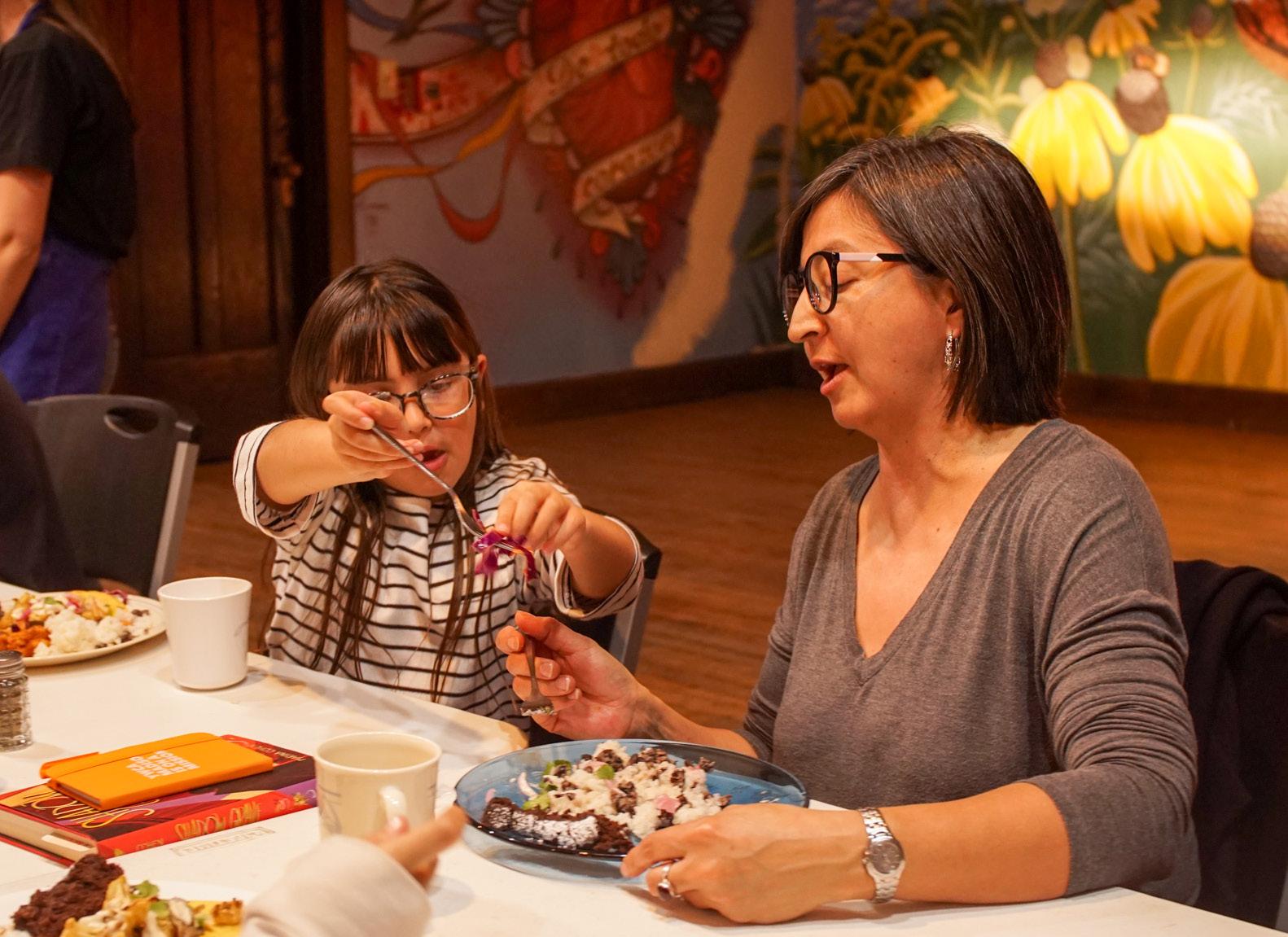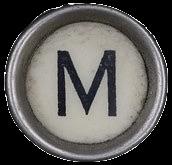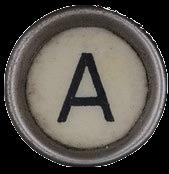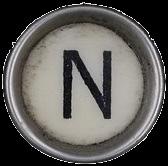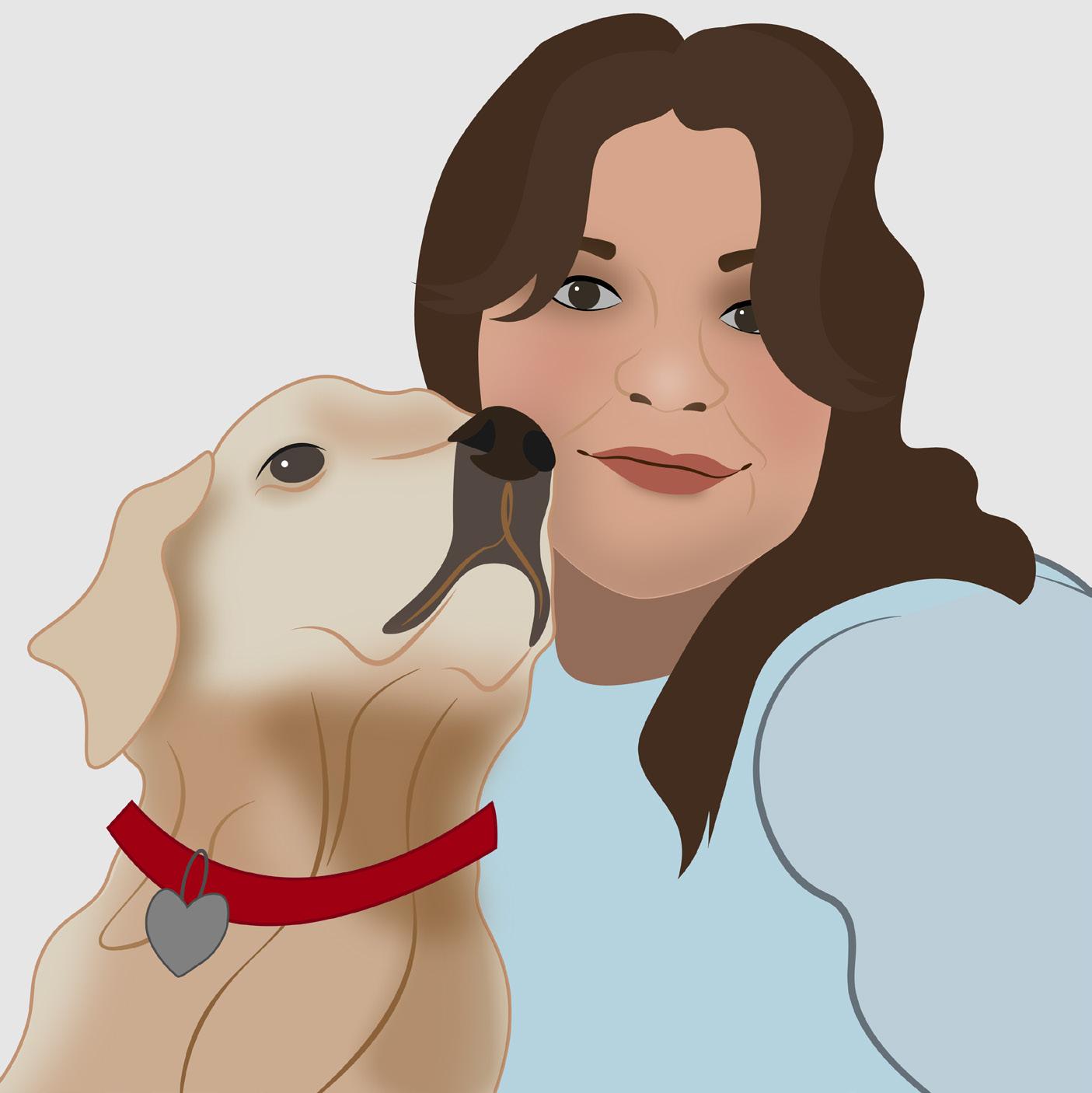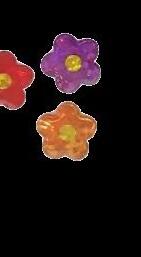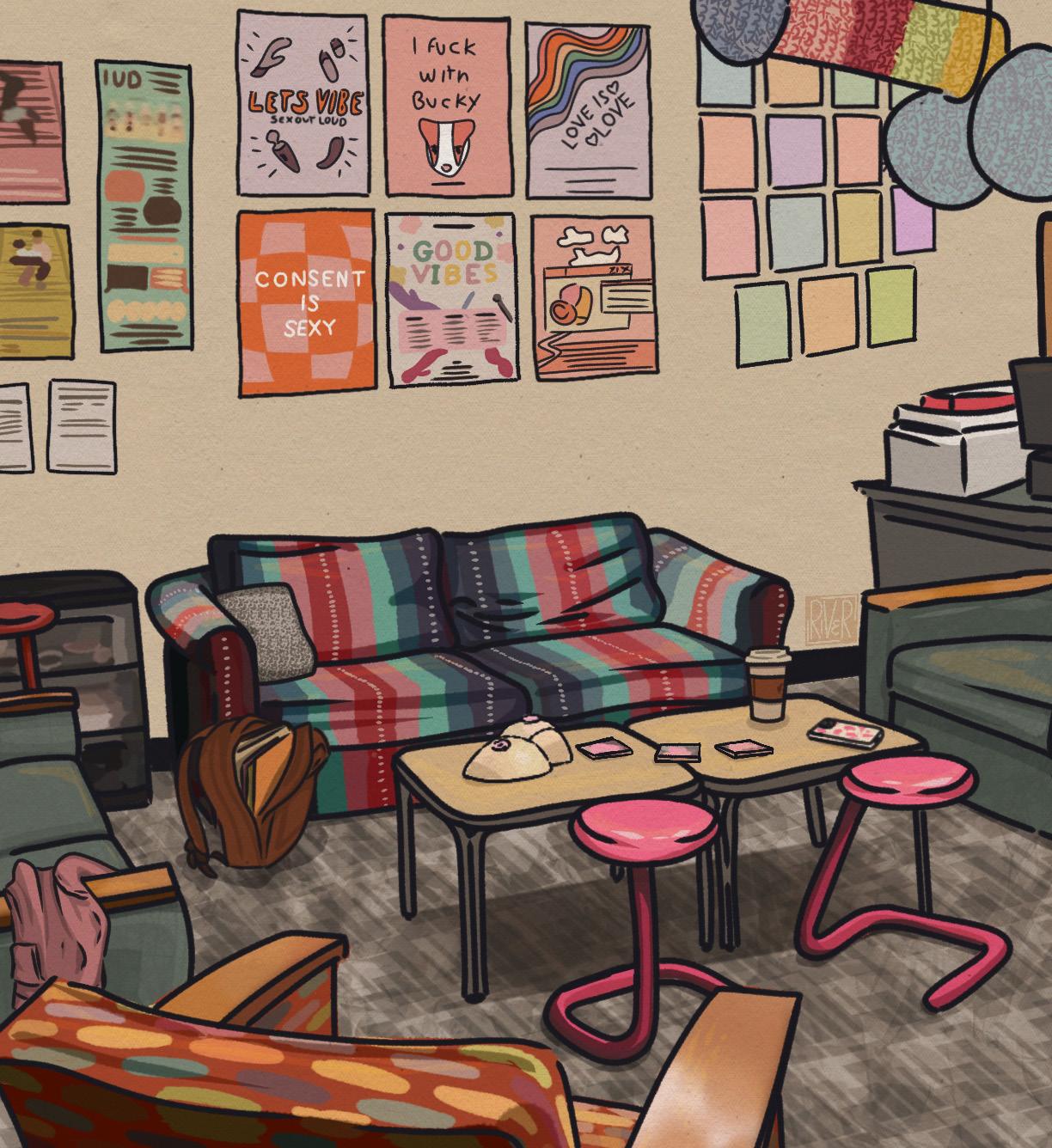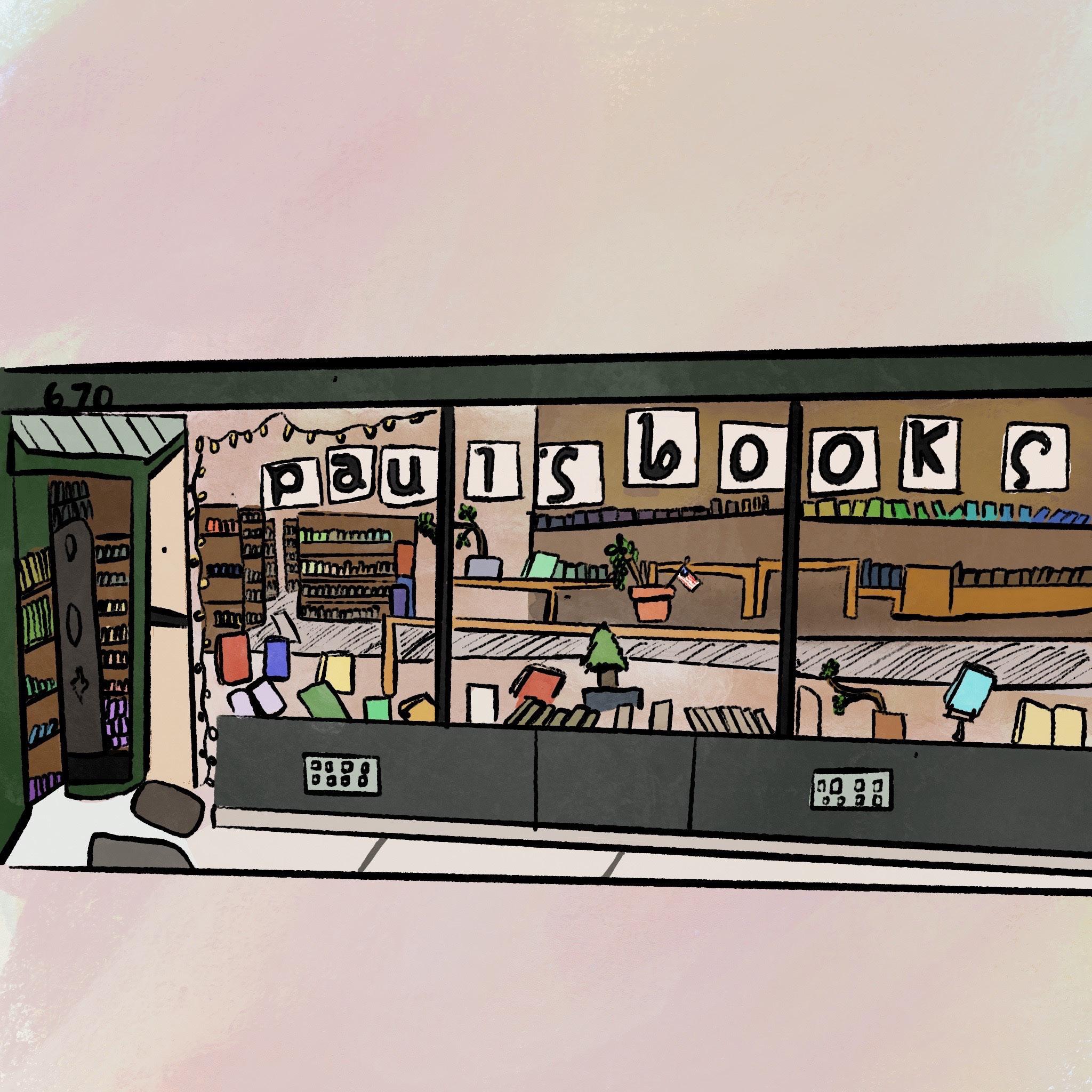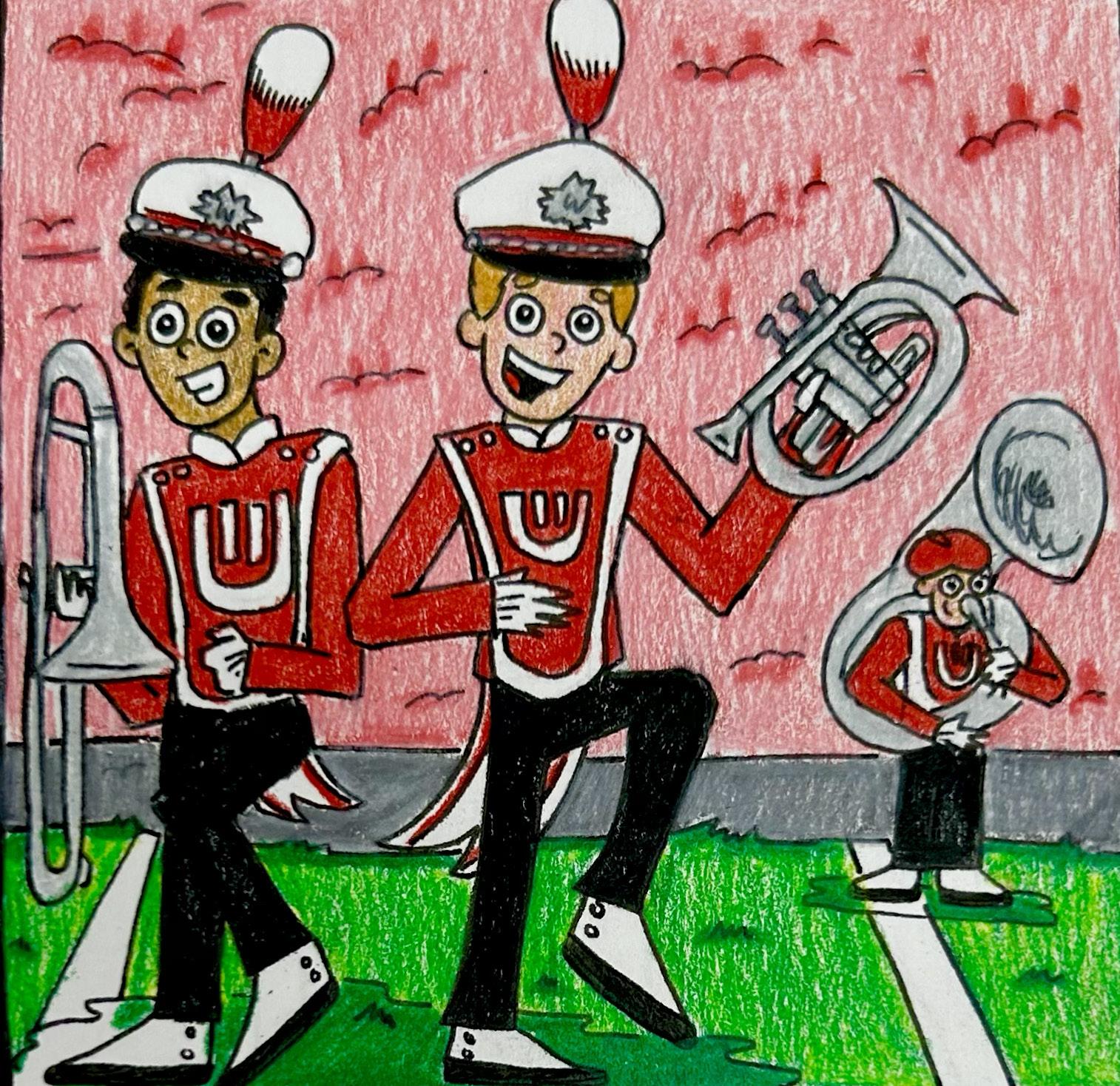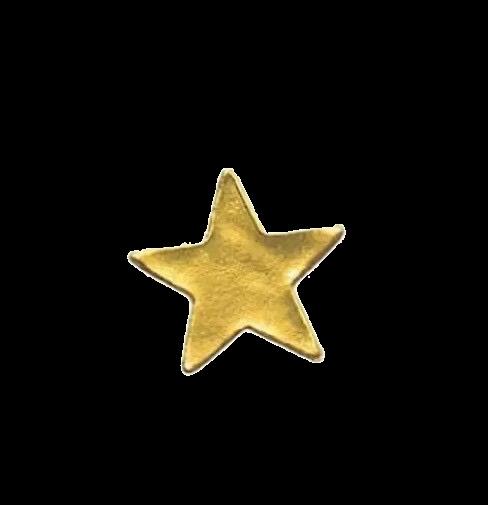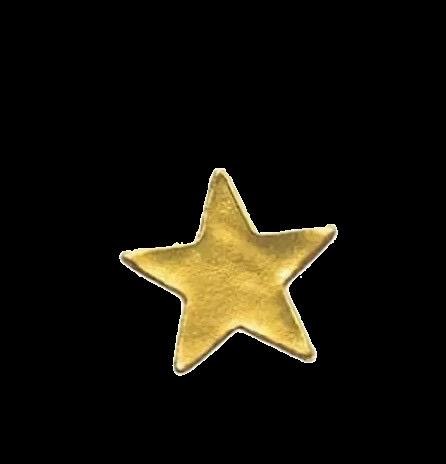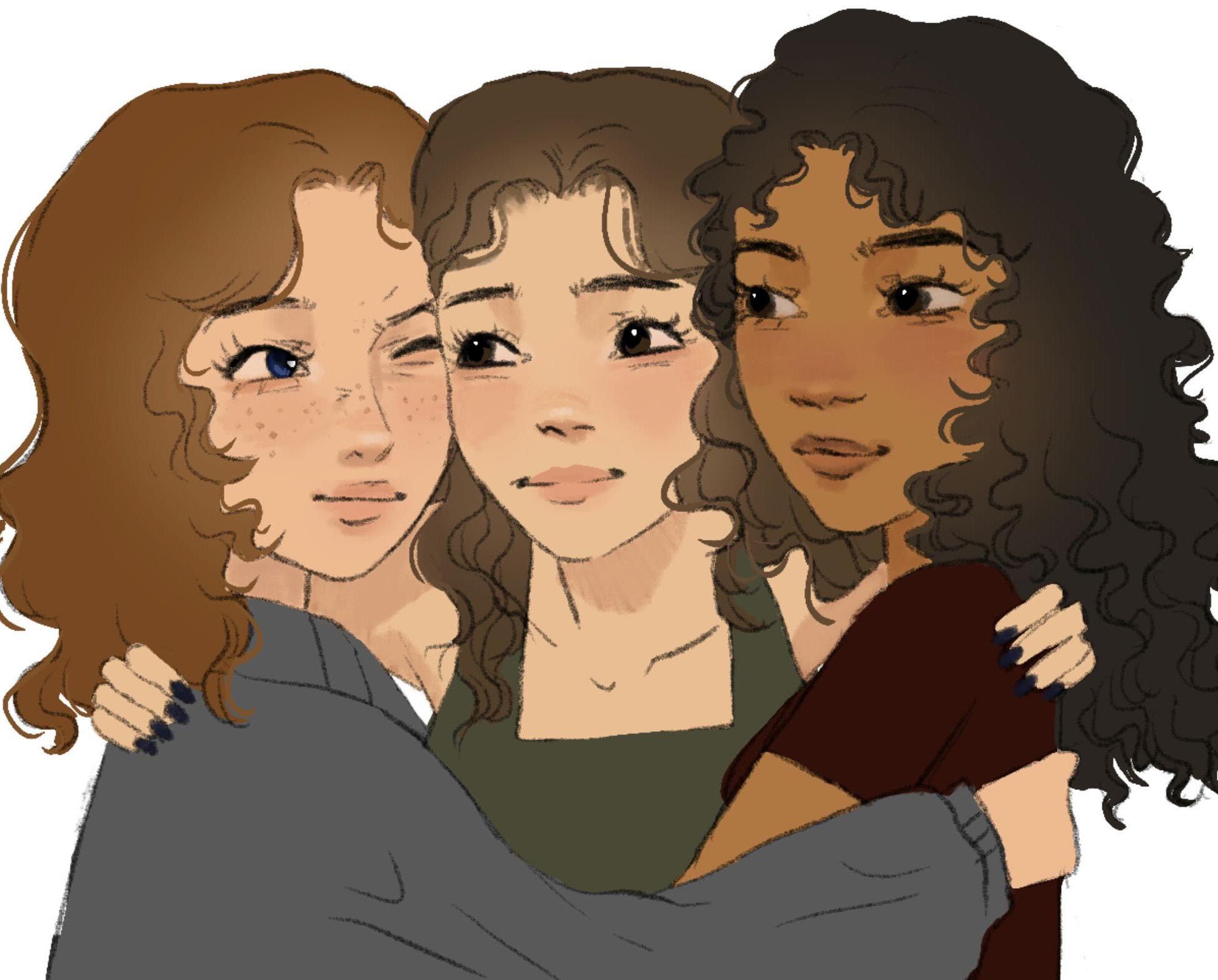








































































Whether it’s on campus, online or on national TV, polarization dominates much of the way we communicate. It’s clear that fault lines open rifts in our social fabric.
Some divides are the product of systemic inequalities. Others are the product of political actors who refuse to hear each other and encourage us to burrow deeper into echo chambers rather than empathize with our neighbors.
What’s more, we’re heading toward a loneliness epidemic. Recent Gallup polls found nearly 40% of college students endured loneliness the previous day during the spring 2023 semester, and Americans’ perceived
mental health hit an all-time low in winter of 2022.
Loneliness has tangible negative health effects. Research from the U.S. Surgeon General’s office found loneliness can increase the risk for premature death at levels comparable to smoking 15 cigarettes a day.
We have a connection issue.
Yet, we also have an innate desire to seek safe, supportive communities, especially as college students. We join clubs that match our passions, don our striped bib for Badger gamedays or spend hours making home-cooked meals for friends and family. Life is best when it’s shared with people we love.
These are the stories we captured in The Connection Issue.
Our project shines light into the rifts we face and shares stories about people and groups who ground us in community and empathy. Music — whether it’s brass or deep bass — connects our college experience. Shared meals in church basements bring people together and open doors to those who struggle to afford food.
We also tell stories of persistence and resilience. LGBTQ+ students who were scared to stand out in their hometowns found space to shine in Madison. A tribal community left on the wrong side of the digital divide built its own broadband network. And social workers help Ukrainian refugees forced to flee from war find their footing.
Division still exists, and we
acknowledge that. Some students on campus feel UW-Madison’s protest policy is too restrictive. Others feel administrators need to listen more than they talk when it comes to controversial issues. It’s healthy to disagree, and disagreement often sparks needed change.
Still, it’s important to remember we share the same 936-acre campus. We each arrive with hopeful anticipation, and odds are we’ll leave with bittersweet nostalgia for our college years, even if bigger dreams lie ahead.
You can’t bring Terrace movie nights or walks on the Lakeshore Path with you when you graduate. But you can keep the connections you make.
By Kayla Dembiec STAFF WRITERIn late October 1969, a card was pinned on the bulletin board at Memorial Union announcing the first open meeting of homosexuals in Wisconsin.
The meeting was set to take place in the undercroft of St. Francis House, an Episcopal church located on campus.
“The first time I went there, I had to circle around the building three times before I could get up the nerve to go in,” said Jim Yeadon, an early member of the group, according to OurLives, a Wisconsin LGBTQ+ news organization.
Out of fear, most members were reluctant to share their names.
More than 50 years later, a tattered and weathered pride flag hangs out of the second-floor window of St. Francis House on University Avenue. It’s meant to remind passersby of the powerful history and community LGBTQ+ individuals continue to forge on the University of WisconsinMadison campus.
The state of Wisconsin is home to over 258,400 individuals ages 13 and over who identify as lesbian, gay, bisexual, transgender, queer/questioning, intersex, asexual/aromantic or other non-straight, non-cisgender identities, according to 2023 data from the Williams Institute at the University of California-Los Angeles.
LGBTQ+ people are particularly visible among younger generations. A nationally representative Gallup survey in March estimated more than 1 in 5 Gen Z adults identify as LGBTQ+. Despite political and cultural battles over LGBTQ+ rights in Wisconsin — including ongoing debates around diversity, equity and inclusion at UW campuses — multiple LGBTQ+ students said Madison’s campus and city environment helped them find community.
“I feel like I’ve become more comfortable in my own skin,” said Charlie Huebner, a UW-Madison freshman. “I have opportunities to understand myself more now that I’m here.”
Students from rural areas say campus helps them find acceptance
Kaelyn Makela, a UW-Madison sophomore from a village in south-
eastern Wisconsin, said growing up queer in her hometown’s deeply conservative political demographic was challenging. “It was just the fear of knowing that you’re in a place where you weren’t surrounded by people with a similar mindset,” she said.
Huebner, a UW-Madison freshman from a small town 30 minutes east of Nashville, Tennessee, had a similar experience. Being a queer person in the South was stigmatized, she said.
“It was a bit of a scary situation. You weren’t sure if it would be safe to come out,” Huebner said. She said slurs, homophobia and transphobia weren’t uncommon. When Huebner came to Madison, she had culture shock. She was surprised to see Pride flags in churches — “Something you’d never see where I’m from” — and the acceptance of neopronouns, or pronouns beyond she/her, he/him or they/them, which she said “aren’t a thing” in her hometown.
“[At home] if you’re trans, you’re going to get what you get, if you can even be accepted as changing from she/her to he/him,” Huebner said. “I’m really accepted everywhere here.”
Huebner isn’t alone in feeling unaccepted in her hometown. In a 2022 national survey conducted by LGBTQ+ advocacy group the Trevor Project, researchers found only 37% of LGBTQ+ youth identified home as a safe space.
Makela also felt constrained by which identities were accepted and accepted in her hometown. Where she’s from “stunted” her from thinking she was gay, she said.
“I genuinely believed I was straight until I was a senior in high school, which is ridiculous. I was almost 18,” Makela said. “I told myself, ‘I’m not gay,’ and even if I was, I would never come out of the closet.”
Living in Madison allowed Makela to be in her first relationship, something she said helped her accept her identity and freely express herself. “Being in Madison made being gay not a second thought that sat in the back of my mind, but rather part of who I am.”
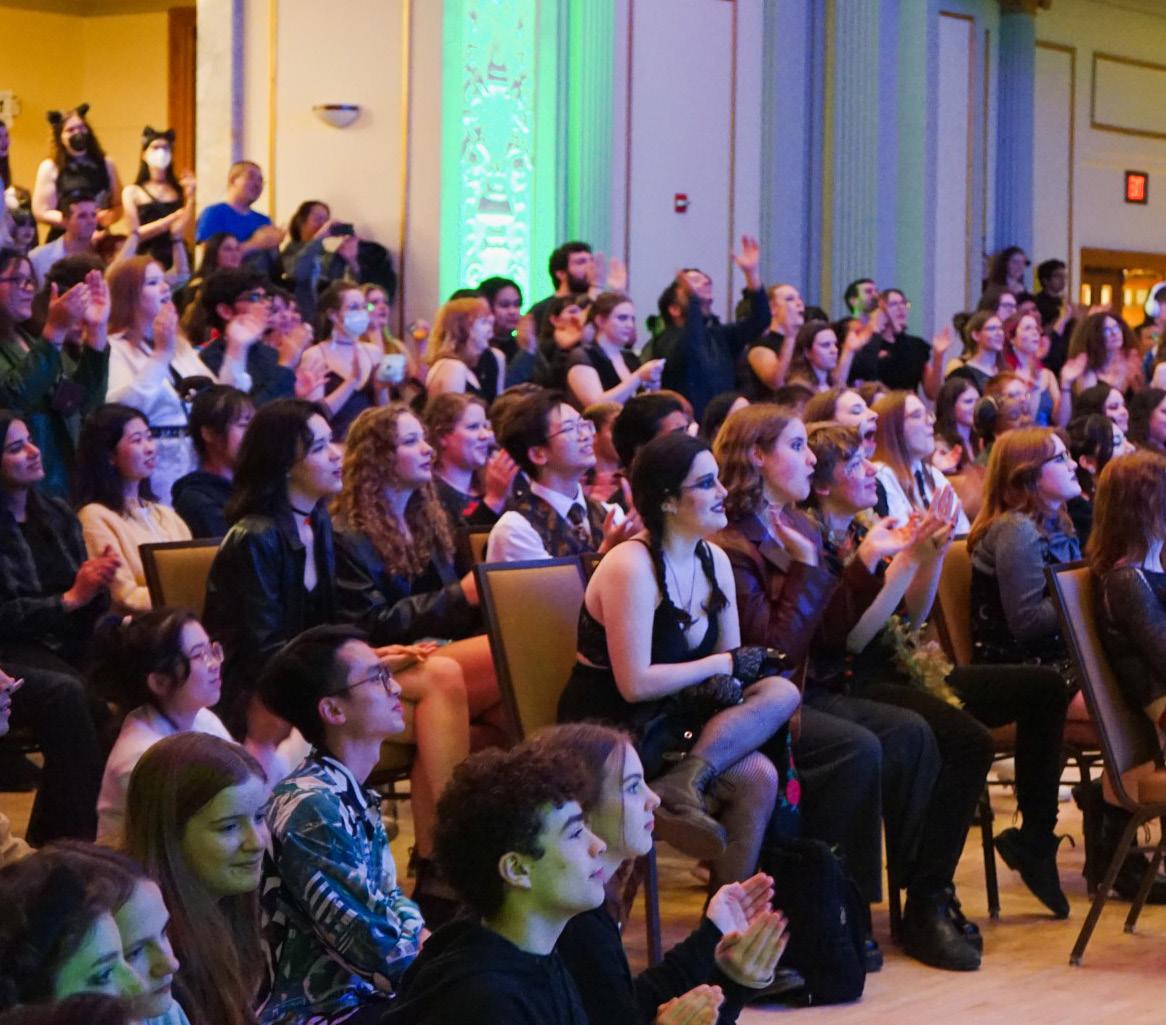
Representation, spaces for LGBTQ+ community.
Chloe Foor, a UW-Madison senior, said increased visibility of accepted LGBTQ+ community members is important for LGBTQ+ individuals coming to Madison from rural and conservative areas.
“Being aware that there are other people like them who are living full and happy lives while still identifying as LGBTQ+ is very important,” Foor said.
Representation was important for Zainab Manzoor, a 2021 graduate of UW-Madison, who said she found comfort when surrounded by people similar to her.
“On campus itself, I was finally in a place where I had friends that identified as LGBTQ+,” Manzoor said. “It was very inviting, and it helped me realize that these feelings are natural.”
Foor is a student historian at the UW Archives conducting a yearlong study on past, present and future spaces relevant to the “history and proliferation” of on-campus queer culture.
While covering the topic, Foor knew she would have to cover both the positive and negative experiences LGBTQ+ individuals faced. One critical instance was in the 1960s “gay purges,” in which UW-Madison searched for homo-
sexual male students and attempted to force their exit from the university through expulsion, revocation of financial aid or arrest.
UW-Madison offered readmission in select cases — if students underwent psychotherapy or religious conversion therapy.
“In order for those spaces to be purged, they first had to be a place where gay people would meet and congregate,” Foor said.
Saint Francis House opened its doors to the first LGBTQ+ organization on campus and served as a “safe house” during the war protests and riots.
“The ethos around being a community meeting place was, ‘Of course,’ so when the Madison Alliance for Homosexual Equality was looking for a meeting space, St. Francis House did not turn them away,” Foor wrote in a 2023 blog post.
Foor said the bathrooms of Science Hall were another LGBTQ+ space as well as Bascom Hall and the old campus library, now the Wisconsin Historical Society. Knowing that spaces exist, Foor said, can be a gateway into the community.
“The existence of a space is important to be aware of,” Foor said. “Without a physical location to meet and congregate, it’s really hard to find a community.”
Readthefullstoryatdailycardinal.com
While the war in Ukraine may be half a world away, the Madison community’s connection to the crisis is not as small as it may appear.
That’s thanks to Jewish Social Services of Madison (JSS), a social service agency that empowers individuals across generations and cultures through spiritual programs, senior services and a refugee resettlement department.
JSS’s refugee resettlement department is its largest arm, and it helps connect people who arrive in Madison with the services they need to thrive, according to Kai Mishlove, JSS executive director.
“We help our Jewish community, but we also help other communities. It is a part of our mission of repairing the world,” Mishlove said.
JSS is the only resettlement agency in South Central Wisconsin. Each year, JSS welcomes between 125 and 175 people, according to Mishlove.
In 1976, JSS helped Jewish refugees escaping the Soviet Union. Today, the organization helps displaced people from all over the world, regardless of religion or cultural background.
Recently, the JSS has aided Ukrainian families forced out of their homes when Russia invaded Ukraine in 2022. Since then, nearly 6.5 million Ukrainians have been displaced globally, and 3,672 are now in the U.S.
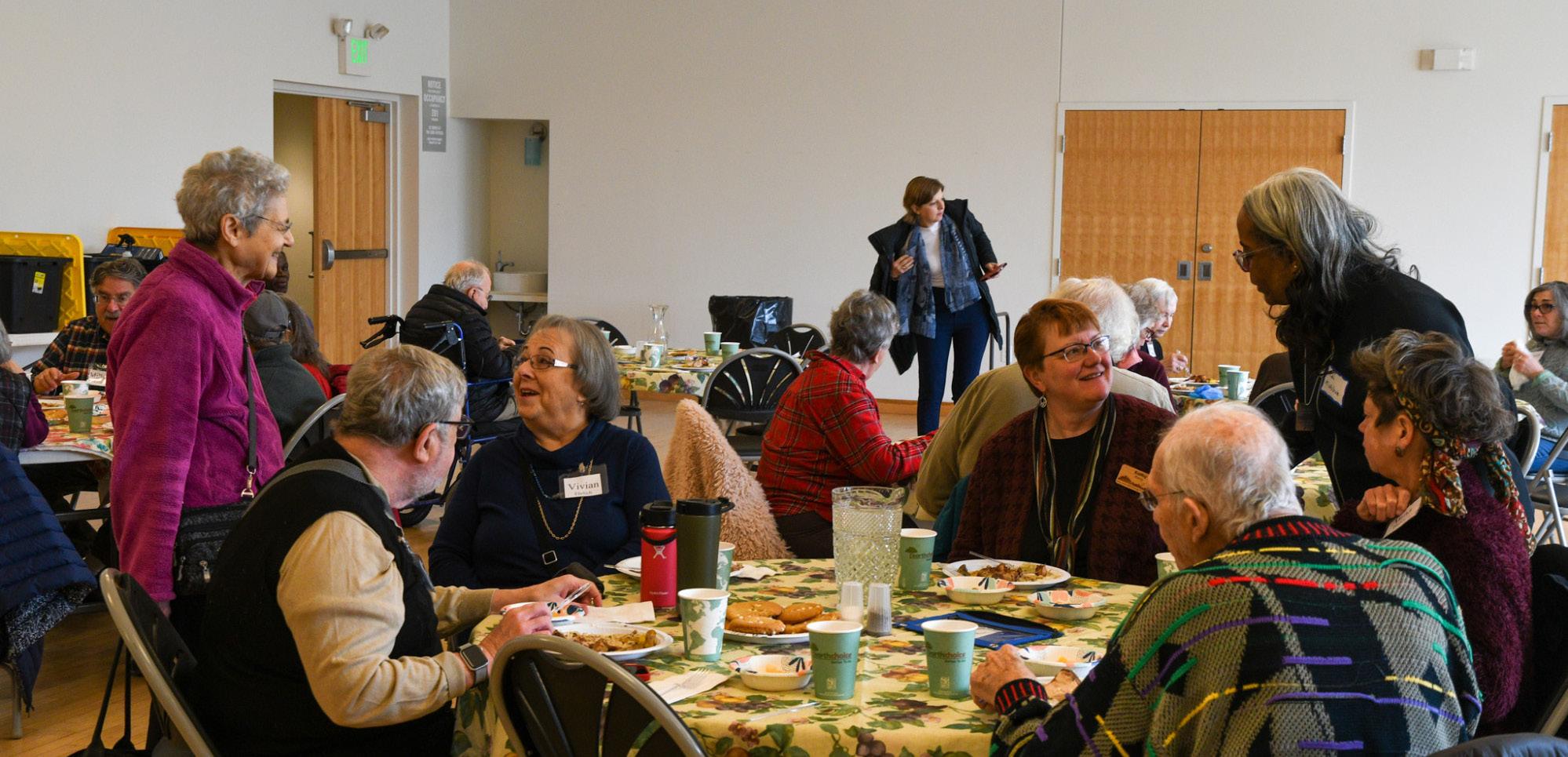
Sunday Nzitatira, JSS director of resettlement, oversees the transition for every client.
Nzitatira said he survived the Rwandan Genocide and moved to the U.S. with his family under refugee status seven years ago. He has worked with refugees through JSS since his arrival.
The Hebrew Immigrant Aid Society (HIAS), JSS’s officiate, will notify Nzitatira between one week to two days before those under refugee status relocate to Madison. After this, JSS’s work on finding housing and resources begins immediately.
Upon arrival, refugees are connected with case managers, and man-
datory health screenings are organized to address any health issues, Mishlove said.
For some, this medical attention is more urgent than it is for others.
“We have had cases where people were coming in, and we knew immediately that when they came in, their child needed open heart surgery,” Mishlove said.
For people moving to a new and foreign community, Mishlove said JSS aims to alleviate the uncertainty that accompanies refugee status.
“At minimum, [we are] making sure that they receive a cultural meal, they’re receiving appropriate clothing, and that they’re connected to their
community of origin,” Mishlove said. Navigating barriers JSS’s resettlement resources are often overwhelmed because of factors unique to Dane County, according to Mishlove.
“It’s difficult to find housing in that timeframe,” Mishlove said. “Sometimes that might mean we have to put somebody up in a hotel because their travel has already been booked and we cannot delay receiving them.”
Units in Madison cannot house groups of more than five unrelated adults under city housing standards, with an additional adult allowed if all persons have qualifying disabilities.
This, along with difficulty find
affordable four-bedroom apartments for large families, makes it challenging for JSS to accommodate some newcomers, Mishlove said. Affordable housing is JSS’s largest concern before a family arrives.
“We don’t have enough affordable housing for refugees,” Nzitatira explained.
In it for the long haul
According to Mishlove, JSS strives to help every Ukrainian refugee become financially self-sufficient after three months in Madison.
During the first 90 days after their arrival, JSS social workers set people up for social security, enroll their children in school and connect people with the resources they need to flourish, Mishlove said. It also finds immediate jobs for its clients so they can start earning wages while helping them find jobs in their respected fields.
“We have to look at all of these different areas that affect a person’s life, and their acclamation,” Mishlove said. “How can we assist them in providing resources to them, given that we have limited resources that exist in Dane County?”
There is more that can challenge a person’s ability to acclimate into a new and foreign space than just legal and medical concerns, Mishlove said. Cultural differences, language barriers and isolation create long-lasting issues for refugees without community resources and support.
A Wisconsin tribal community didn’t have reliable internet, so they built itBy Nick Bumgardner SENIOR STAFF WRITER
Located on the scenic shores of Pokegama Lake in Lac du Flambeau, Wisconsin, Harrison’s Pub and Grill is a local favorite on warm summer days. When the sun turns to snow, visitors are certain to find a full house of snowmobilers stopped for a respite from the harsh winter weather.
Its menu is quintessential Wisconsin: Friday fish fries, cheese curds and, of course, beer.
But one thing is not on the menu: reliable internet.
“It’s horrible,” said Harrison’s owner Joy Hanser.
Harrison’s gets its internet through Frontier, the area’s main wired internet provider. And while their business internet plan provides a “decent” connection to keep their day-to-day operations running, Hanser said the Wi-Fi struggles to keep up, frustrating customers.
“They want to get online. Cell phone service up here is horrible as well. So, what they’ll try to do is use the internet to make an internet call to family and say, ‘Hey, we stopped at Harrison’s, we’ll be home in an hour,’ right? But you can’t do that either because cell service isn’t working, and now we can’t get online,” Hanser said.
Hanser’s story isn’t unique. Unreliable internet has plagued Lac du Flambeau for years, frustrating locals and making routine parts of life — like work, education and healthcare — difficult. Now, thanks to a federal grant, help is on the way.
This spring, Lac du Flambeau’s Business Development Corporation will break ground on a $25.6 million infrastructure project focused on building a publicly-owned broadband network.
The project, funded through the National Telecommunications and Information Administration’s (NTIA) Tribal Broadband Connectivity Program, aims to connect all houses on the Lac du Flambeau reservation with highspeed internet by January 2026.
“The internet is the way of the world today,” said Dion Reynolds, chief operating officer of the Business Development Corporation. “Without that connection, the tribe and tribal membership is missing out on a huge chunk of what’s going on.”
Providers didn’t meet community needs
Vilas County, where most of the Lac du Flambeau reservation resides, has 25,449 broadband service locations (BSLs), which are places where broadband internet is or can be installed.
Of those, 15,796, or 62%, are underserved, unserved or otherwise lack service altogether, according to data from the Wisconsin Public Service Commission. While only 18% of BSLs statewide are service-limited, these kinds of coverage issues are endemic across the rural north. In neighboring Oneida County, 42% are service-limited. To the west in Iron County, that number is as high as 71%.
Most of the reservation runs inter-
net speeds slower than the Federal Communications Commission standard of 100 megabits per second (Mbps), with some areas even running speeds below 1 Mbps. Where internet service isn’t available, some residents turn to local cell towers.
“If you’re coming right down the main strip, your internet speeds are going to be well above what you need. But going down those side roads, away from that main strip, you see the performance dip dramatically,” Reynolds said. “And that’s where a lot of housing units are.”
Currently, several private internet providers operate in the area. The main local exchange provider is Frontier, which offers wired services via copper wiring. Other homes in the area rely on wireless providers like HughesNet, SonicNet and Starlink, Elon Musk’s satellite internet startup.
These providers aren’t meeting the community’s needs, Reynolds said. “[The] digital divide they always talk about only gets wider.”
At her home on the reservation, Hanser’s situation is even worse. There, her internet runs through HughesNet, a satellite service.
“If the wind blows the wrong way, it doesn’t work. It’s horrible. I’ll turn my computer on, then I look at it and go, ‘I better go do some laundry.’ I’ll do the laundry, come back, ‘Yep, it hasn’t loaded yet.’ Then I’ll go fold laundry, and I’ll come back. ‘There we are!’” Hanser said.
Hanser’s internet is gig-limited, meaning speeds gradually slow
throughout the month. When she’s off the clock at Harrison’s, Hanser runs two other businesses from home, something slow internet speeds make “miserable.”
On top of it all, Hanser’s internet situation complicates ordinary parts of life, like finding news.
This especially comes into play with TV news. When snow storms batter her house in the winter, Hanser loses signal until the snow melts or she decides to climb her roof and brush the satellite off herself.
“It’s just so frustrating. The services are so antiquated here or just haven’t been a priority.”
Pandemic prompts a new way forward
Although internet access has been a struggle in Lac du Flambeau for years, the COVID-19 pandemic was a point of reckoning for the tribe. Everything from online schooling to remote work needed quality, highspeed internet.
To solve their connection issue, tribal leaders in 2021 pursued a 3.5 gigahertz (GHz) spectrum allocation through the FCC. They got it, but leaders decided to pursue a different solution due to competition with local entities and other concerns.
Meanwhile, between 2020 and the end of 2021, Congress passed two bills — the Consolidated Appropriations Act and Infrastructure Investment and Jobs Act — that established the Tribal Broadband Connectivity Program and allocated $3 billion in grants to build tribal broadband networks.
Lac du Flambeau leaders jumped at the opportunity. By the end of 2022, the NTIA awarded the tribe $25.6 million to build their own network. From there, the tribe partnered with private contractor Elexco Inc. to build the network.
In January 2024, the tribe passed its final hurdle: environmental clearance from the Department of Commerce.
Once constructed, the federallyfunded network will provide new opportunities for their community to participate in telehealth, online education, remote work and countless other benefits that internet access can bring, said Margaret Gutierrez, acting division chief of the Tribal Broadband Connectivity program.
“Through President Biden’s Internet for All initiative, we are providing the resources necessary to deploy highquality, high-speed internet service across Tribal Lands.”
Once built, the network will be owned and operated by the tribe under the public brand EighthFire Communications. Entry-level packages will start at 75 Mbps, then 150 Mbps and 225 Mbps, with the hope of sustaining 1 gigabit per second in the future.
The tribe stands ready to break ground in a matter of months, intending to put its first fiber cables in the ground by May. From there, they hope to connect their first home in the fall and all homes by January 2026.
“It’s gonna be night and day,” Reynolds said.
It’s DJay Mando’s job to elevate music from background noise to the heartbeat of the night. With each beat he spins, Mando ensures people facilitate connections through music that are both harmonious and profoundly transformative.
“It’s surreal in the moment,” said the Madison-based disc jockey. “You underestimate the impact you’re having on people sometimes until you see them in person.”
For many students, music provides the cacophony to a traditional night out. Whether it’s blasting through cheap speakers in a crowded fraternity basement, playing through the loudspeaker between possessions at a Wisconsin Badgers game or echoing across the walls of the Sylvee, music is everywhere.
“It is woven into the fabric of this institution,” said Elizabeth Snodgrass, Wisconsin Union Theater director. “A song, a musical, a play or a dance often says something more powerful than a conversation.”
Amid the hum of a rising loneliness epidemic, students are grasping for connections. Americans’ evaluations of their mental well-being hit a record low during the winter of 2022, and 39% of college students said they “endured loneliness” the previous day, according to a Gallup poll.
Through musical student organizations — like the Marching Band, acapella groups, The Studio and the Wisconsin Union Directorate Music Committee — students are combatting this rise in loneliness head-on, building upon musical tradition as a form of connection at the University of Wisconsin-Madison.
How are students finding the sound of connection?
Mando, who got his start by playing in Madison’s Liquid nightclub during his time as a UW-Madison student, has served as the stadium DJ for the Badgers since 2019.
“I make a point to make it more than just playing music, we want to make it an experience so that every time you hear that song after one of our shows, you go back to that moment,” Mando said.
It’s Mando’s job to play “Jump Around” during Badgers football games, a 25-year-old Wisconsin tradition that ESPN labeled as “the best tradition in college football.”
“You can’t beat that,” he said. “We’re causing earthquakes [in] the city.”
But Mando isn’t the only one tasked with upholding the university’s musical traditions.
During over 100 Badgers games per academic year, the UW Marching Band fills arenas and stadiums with ener -
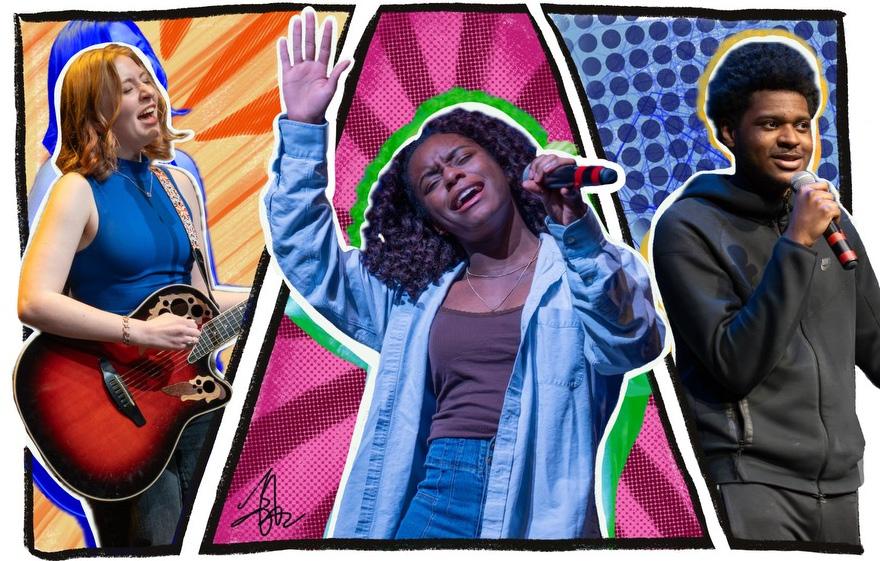
getic tunes and iconic songs like “Varsity” and “You’ve Said It All.”
Led by Director Corey Pompey and Assistant Director Alexander Gonzalez, the band performs at six Badgers sporting events — football, men’s and women’s hockey, men’s and women’s basketball as well as women’s volleyball events.
For the Marching Band, which was formed in 1885, tradition is the name of the game. Before modern technology, Gonzalez said, marching bands were the main aspect that brought excitement to football games.
”That’s the soundtrack to their college experience,” Gonzalez said.
Michael Leckrone took over as director of bands in 1969, and he brought a jolt of energy through his retirement in 2019. The gameday experience has evolved since then with the help of DJay Mando and modern enhancements, like video boards and loud speakers.
But the marching band has remained constant.
“There’s not a lot of things that look the same as they did in 1972,” Gonzalez said. “That [tradition] ties people to their memories of when they last saw the marching bands.”
Band members arrive in Madison four weeks before classes begin to prepare for the season and find themselves with “300 friends that they can all look toward,” Gonzalez said.
“We put hundreds of individuals together to accomplish one singular thing: sound the same,” Gonzalez said. “Their hearts are connecting on levels that nonmusicians don’t get to experience. There’s a double metaphor to the word harmony.”
The band performs during halftime at home football games, along with a performance after the game entitled “Fifth Quarter.”
And as the final notes of the Fifth Quarter show echo through the stadium, the marching band
takes a bow, serving as a beacon of camaraderie. But beyond the grandeur of the football game lies a quieter force that cultivates connections amidst a rising loneliness epidemic: The Studio.
Why are students so lonely?
In 2023, U.S. Surgeon General Dr. Vivek Murthy declared loneliness a public health crisis. As students drift further apart, music becomes the bridge that brings them together, creating a harmonious bond in an increasingly lonely world.
That disconnect is where The Studio comes in.
The Studio is UW-Madison’s residential learning community that focuses on the arts. It’s currently home to 68 firstand second-year students, according to program manager Ammo Eisu.
While The Studio is a community focused on multiple mediums of art, Eisu said 44 out of 68 residents indicated that they were “into” music as an art form at the beginning of the year. Headquartered in Ogg Hall, students have access to four creative spaces, including a full recording studio.
The Studio is home to multiple Madison bands. Indie rock groups Boxing Day and East of Vilas both got their start in the residential community.
“If you care about your art, and if it’s authentic to you, then it’s worthy of being perceived,” Eisu said. “Bands [form] when lots of disparate cultures and perspectives come together and form a new voice.”
It’s through these connections that a true sense of community emerges — a collection of relationships that sustain students through their residential journey, he said.
“When you have this campus of thousands and you create a microcosm… that is super helpful,” Eisu said. “Community is just simply a collection of relationships.”
This sense of community extends beyond the recording
the White Sox and was like, ‘Do you guys want to come sing the National Anthem?’ So we’re gonna sing the National Anthem next semester at the White Sox game.”
Redefined hosts retreats and social events with other a cappella groups to learn the music and strengthen their camaraderie.
“I found such a community in acapella. Being able to create music and share that with other people is another level in terms of community,” Greenfield said “It’s something that makes you smile.”
Bringing people together through live music
While a cappella groups bring musical camaraderie to the big stage, it’s the WUD Music Committee that takes charge of booking it.
studio into curricular programming. Each semester, Faculty Director Professor Helen Lee offers a seminar class where students learn about art by exploring various venues and engaging with visiting artists and local experts.
“It’s this buffet of the arts,” Eisu said. “We’re trying to show the students what arts are available on campus and in the Madison community at large.”
The Studio offers four opportunities for students to show off their art through what they call “showcases.” The first two are closed to Studio members only, but the other two are open to the public, and students have the opportunity to show off their art in a community that Eisu said “encourag[es] each other by supporting each other.”
But The Studio isn’t the only musical space designed for connection through musical creativity.
When students harmonize
Enter a cappella.
The MadHatters, UW-Madison’s first established acapella group, formed in 1997. Within a cappella subculture, students find a unique sense of community reminiscent of the Barden Bellas of “Pitch Perfect,” albeit with a touch of real-life camaraderie.
“It’s a place to escape and be with my friends and sing and do something that makes me happy for a couple hours a week,” said Sloan Greenfield, co-music director of UW-Madison’s mixed-voice Redefined A Cappella group.
Within the 18-member group, members have what Greenfield said is a great opportunity to “make the school smaller.” Founded in 2001, Redefined writes musical arrangements used for three semesters. They don’t buy any music from outside sources, and all their arrangements are created by current and former group members.
“Alumni will come [back] for concerts or gigs,” she said. “One of our alumni works for
With the help of advisor Sean Michael Dargan, the approximately 80-student committee books five shows per week.
“[Students] come together as part of the WUD music committee and make these decisions, develop these incredible events and meet people from across the university,” said Madeleine Carr, the committee’s communication coordinator. “Friends that they would never have had elsewise, because of the shared love of music.”
This friendship among the committee is similar to what WUD Music hopes to inspire in its event goers. That mission continues even after students move out for the summer, when WUD Music focuses on the greater Madison community.
“Alumni that remember their time on the terrace so fondly come back,” Dargan said. “There will always be a great view, there will always be a beautiful seat, there will always be something delicious to drink and eat and there will always be great music.”
Engaging in music with others increases happiness, according to a study published in Psychology of Music. As WUD Music Committee members, students play a crucial role booking live music in a world emerging from a lockdown that exacerbated social isolation.
“I just love going to the shows. You watch the weight leave [people’s] shoulders, smiles on faces,” Carr said. “[We’re] creating connections to know that your emotions are being heard on a wider scale.”
Music is everywhere. From the pulsating beats of DJay Mando to the harmonious melodies of acapella groups like Redefined, UW-Madison’s campus is alive with the sound of music.
“There is community in identifying with an artist, performance or type of musical genre,” Snodgrass said. “And, often, music and other performing arts can convey a message when words are insufficient.”
When a University of Wisconsin Police Department officer shoved a pro-Palestinian protester to the ground a month ago and detained another, many students and student organizations took to social media to voice their outrage.
Central to the discontent was UW-Madison protest policy, which aims to protect free speech while placing “reasonable” restrictions to ensure that protests do not “impede or disrupt the academic mission.”
But disruption of the university’s academic mission isn’t always cut and dry, and “disruption of learning” itself is a term that Howard Schweber, a UW-Madison professor and first amendment expert, said is wholly subjective.
“Disruption to learning doesn’t have a precise definition and is necessarily a judgment call,” he said. “One enormous question is whether one can find a disruption to learning based on feelings. So if students are made to feel afraid or offended, could that constitute a disruption to learning?”
Student organizations have also pounced on the wording of the protest policy, saying it is often antithetical to the ideals of protest.
Student group Anticolonial Scientists released a statement on Feb. 21 calling the current protest rules “unreasonable” and “fascist.” They also demanded all the citations and fines levied against the detained protester be dropped and for the “unconstitutional” protest rules to be immediately revoked.
Mecha de UW-Madison, a Latine student organization, demanded UW-Madison remove protest guidelines that restrict free speech. They criticized a line in UW-Madison protest policy that states protesters can be penalized for “intentionally obstructing authorized activities,” which Mecha said is in fundamental conflict with protest principles.
The Associated Students of Madison Equity & Inclusion Committee also released a statement in support of the protestors.
“Students have the right to peacefully protest without the threat of state violence,” ASM wrote. “UWPD violence at the peaceful protest on February 13th, 2024 was yet another example of state violence. The University must do better.”
What’s in the protest policy?
UW-Madison protest policy outlines acceptable forms of on-campus protests. The policy allows for “spontaneous expressive activity,” but the activity cannot “disrupt the functioning” of the university.
The rules were established by the UW Board of Regents and apply at all UW System campuses.
Students who do not abide by these rules are subject to sanction and will be referred to the Office of Student Conduct and Community Standards, according to a “Protest Dos and Don’ts” graphic in the policy.
The policy focuses on events held inside of campus buildings and categorizes blocking the vision of others in any manner, such as with a sign, cer-

tain clothing, a prop or a person’s body as “likely disruptive” and therefore in violation of the policy.
Other actions categorized as likely disruptive include the use of laser pointers, turning off lights in the room and setting off alarms on phones.
Schweber said many of the protest guidelines seemed reactive and not fully thought through.
“Rules are often made in response to some particular thing that’s happened without enough thought being given to what else they might be applied to,” Schweber said.
Anuj Desai, a UW-Madison law professor and First Amendment expert, said the university ultimately gets to decide what is allowed to happen within the confines of university buildings.
“The government is regulating its own property,” Desai said. “The government owns this building and is serving the role of both the educator trying to make sure that the university serves that educational purpose, but also to make sure the buildings serve their purpose.”
The university’s protest policy also includes strict restrictions on signs and noise amplification.
When the Teaching Assistants’ Association (TAA) held a Valentine’s Day protest last month to advocate for paid leave, co-president Madeline Topf said they were told in advance that any signs they planned to bring would not be able to be mounted on sticks or standards.
Before the event, they were contacted by a member of UW-Madison’s protest support team. The protest response team is a group of senior campus administration officials under the Dean of Students office that is charged with the ability to “quickly assemble to evaluate on-going protests and demonstrations, provide guidance to campus staff facilitating specific campus events, and make necessary decisions regarding the event,” according to the protest guidelines.
During the February protest, the UWPD officer who pushed a protester
down reportedly used this part of the policy as justification following the push. “You can’t come in,” he said. “There are no flags and sticks allowed inside the building.”
This sticks and standards policy specifically applies inside of campus buildings, according to Kelly Tyrrell, UW-Madison director of media relations and strategic communications.
When demonstrations do occur outside, Desai said, some spaces have historically lent themselves more to protest.
“The university has just different spaces that are serving different purposes,” Desai said. “Library mall is obviously a university property, but it is a sanctified spot because it’s treated like a public park.”
Additionally, Topf said the TAA was told they were allowed to give speeches but would not be allowed to use amplification, such as a megaphone, without a permit.
At UW-Madison, a permit requires proving that the demonstration will yield 250 or more protesters and necessitate amplification.
The policy also only grants permissions for sound amplification between 12-1:30 p.m. and 5-7 p.m. when amplification equipment is more than 50 feet from most academic buildings, according to the policy provided in an email from Kathy Kruse, associate dean of students.
Topf said these conversations about protest policy led to a lot of rethinking with the details of the TAA’s petition delivery demonstration.
“I wanted to make sure that everybody would be safe,” she said. “I didn’t want our event to be unintentionally breaking all these rules and people getting in trouble.”
This amplification aspect of the UW-Madison Protest Policy has drawn criticism from other student groups
“The university is involved in the harassment of these groups on campus, through its censorship (which includes limiting the location and sound of protests and pushback by UW adminis-
tration against our events), police violence, and ‘investigations’ of SJP and other groups involved in work for the liberation of Palestinians and solidarity with them,” UW-Madison Students for Justice in Palestine said in a Feb. 26 Instagram statement.
Schweber said the sound amplification guidelines are arbitrary and focus on the wrong standard in the anticipated number of protestors.
“Amplified sound doesn’t become more or less disruptive depending on the number of people there,” Schweber said. “The problem is the standard in the number of people, and they should be focusing more on the volume.”
Changing tactics, reactions
UW-Madison is steeped in a rich history of protest. In the 1960s and 70s, UW-Madison removed protestors under the same language of interrupting the academic mission of the university, according to The University of Wisconsin: a History.
In 1967, students protesting the on-campus recruitment for Dow Chemical, which supplied napalm to the U.S. military during the Vietnam War, were clubbed and tear gassed from Madison police, even when they were peacefully protesting during sit-ins.
Edward Friedman, who was a young political science professor at the time of these protests, said in a 2017 interview for the University of Wisconsin Oral History program that he was asked to stand witness to the conduct of police officers by a few of his students participating in the sit-in.
“There was a totally unnecessary use of force. Just beating, beating, beating people who were already running out,” Friedman said. “The sheriffs, when they hit the guys, they went after the gonads. And many of the girls back then wore mini skirts and they really did their best to lift up their mini skirts with their batons.”
Many other accounts focused on the violence they witnessed from the police officers and the resulting radicalization
of students.
During UW-Madison’s Black Student Strike in 1969, state Rep. John C. Shabaz, R-Waukesha, introduced a bill to eliminate traditional tuition remission for out-of-state grad students with assistantships. This came as part of a larger conservative effort to reduce the number of out-of-state students at UW-Madison, whom they believed were to blame for the campus unrest.
While the TAA already existed at this point, membership was low. The bill was the flashpoint that increased their membership to 970, according to the Wisconsin State Journal, and established the organization as the single bargaining unit for TAs.
When the TAA voted to strike in 1970, the university originally treated it as an illegal strike and broke off bargaining. The UW Board of Regents even took the TAA to court over the issue.
All of that history, however, circles back around to UW-Madison’s current protest policy and the notion of a “disruption of learning,” Schweber said.
“Historically, laws against things like disruption were used to crack down on labor unions,” Schweber said. “During the anti-labor period of the Supreme Court and federal courts, generally, courts would say things like, ‘Well this strike threatens to interfere with the relevant industry that’s interfering with commerce, therefore, the strike is illegal.’ So there was a time when exactly that logic was used in sweeping ways to try and prevent the labor movement from getting going.”
In 1967, anti-military recruitment protests were met with violence. On March 24, 1970, the TAA president was arrested for blocking the entrance to Gordon Commons. And in 1970, the TAA strike was regarded as illegal.
“The sheriff’s deputies were out of control,” Friedman said of the 1967 protests. “It was the county police that rioted against the students, that was the actual event that occurred.”
The violence against protesters from 1967 was preserved in photographs and oral accounts. But modern events, like the pushing of a pro-Palestine protester in February, were recorded on cell phones and spread very quickly through social media.
Across the country, too, violence against protesters has been caught on camera time and time again and pressure has been exerted on both local and national governments to hold officers accountable. 2020’s Black Lives Matter protests were sparked by the killing George Floyd in Minneapolis, but throughout the movement, protests were often met with tear gas, riot gear and rubber bullets.
Friedman said changes in policing have been crucial to the perception of protests today as much less volatile than those of the 1960s.
Still, TAA co-president Topf said her group’s mission to promote labor rights remains the same, even if it means navigating complex guidelines.
“Going forward, the union will decide as a group what we need to do in order to have our voice heard and to get a response from the people who are making decisions,” Topf said. “We want to understand all of their rules so we know the risks that we’re taking and make decisions based on that.”
ESPN and other sports channels dominate the TV screens of so many households, influencing the opinions of the fans. These channels provide constant updates on the sports world, from players being drafted in the NBA to the countdown for the Indianapolis 500.
There has been a common theme, however, with these updates and live footage: women’s sports are often downplayed and underrepresented.
But the narrative is starting to shift.
In August, the Nebraska and Omaha volleyball game broke the world record for attendance at a women’s sporting event with 92,003 fans. More recently, Iowa star Caitlin Clark played a major role in the fan turnout that set the seventh all-time attendance record at the Kohl Center in December.
Many Wisconsin Badgers women’s teams have found immense recent success.
Wisconsin’s volleyball squad made it to the Final Four in the NCAA Tournament this year and had three players make the All-American teams. Meanwhile, Wisconsin’s women’s hockey team recently won the WCHA Tournament and is the No. 2 seed going into the NCAA tournament. Both the women’s volleyball and hockey teams won a national championship in the past three seasons.
With this recent upswing, there is no doubt the Madison community has taken notice. To gauge the sentiment of the state of women’s sports in Badgers territory, The Daily Cardinal went to State Street to chat with University of Wisconsin-Madison students.
Their love of women’s sports teams is undeniable.
Freshman Monica Coffery was particularly excited about Madison’s rising women stars. In her view, women’s sports “have taken a backseat for a long time.”
Now, they’re “finally getting the recognition they deserve” from Wisconsin fans and a media ecosystem who recog-
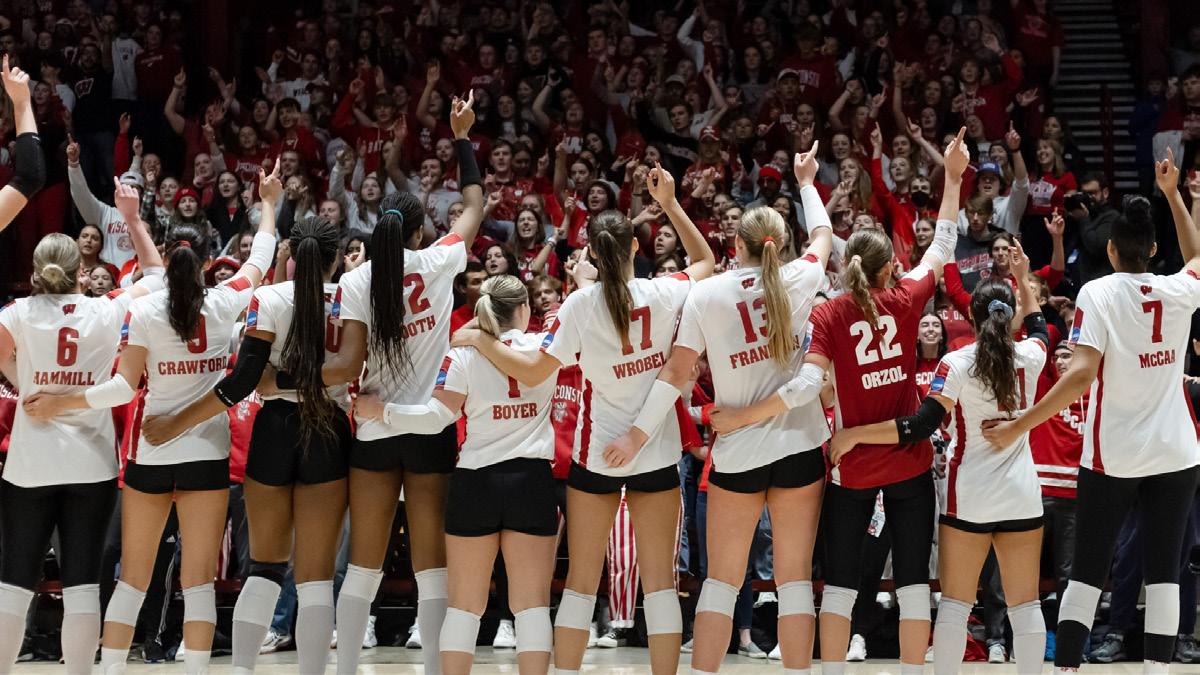
nize the work ethic and grit of women in sports, Caffrey said.
“I believe that women work not only harder when it comes to sports because they love the sport, but women work hard because they have to,” she added. “Men have dominated the sports industry for far too long. It is time for women to be finally recognized and appreciated for not only their love for the sport but for their dedication to the sport and all women.”
Caffrey mentioned Caitlin Clark but said she is “only one of so many examples” of current leaders in women’s sports. She also cited Simone Biles and Serena Williams as women making a difference in the culture of sports.
Gus Yalden, a freshman and member of the Wisconsin men’s basketball team, offered a personal connection to women’s sports, citing his mom’s background as a professional basketball player.
“I think it’s awesome that [female athletes] are getting more recognition because they deserve it as much as we do,” he said. “It’s cool to see.”.
The Cardinal also talked to freshman John Blackwell, another men’s basketball player. He excitedly told us he went to the Wisconsin-Iowa women’s basketball game at the Kohl Center this season, where he was able to see the record-breaking Caitlin Clark.
“It was super fun, and I enjoyed my time, so I’m definitely excited that [women athletes are] getting recognition,” Blackwell added.
Blackwell and Yalden are right that there’s been a mea-
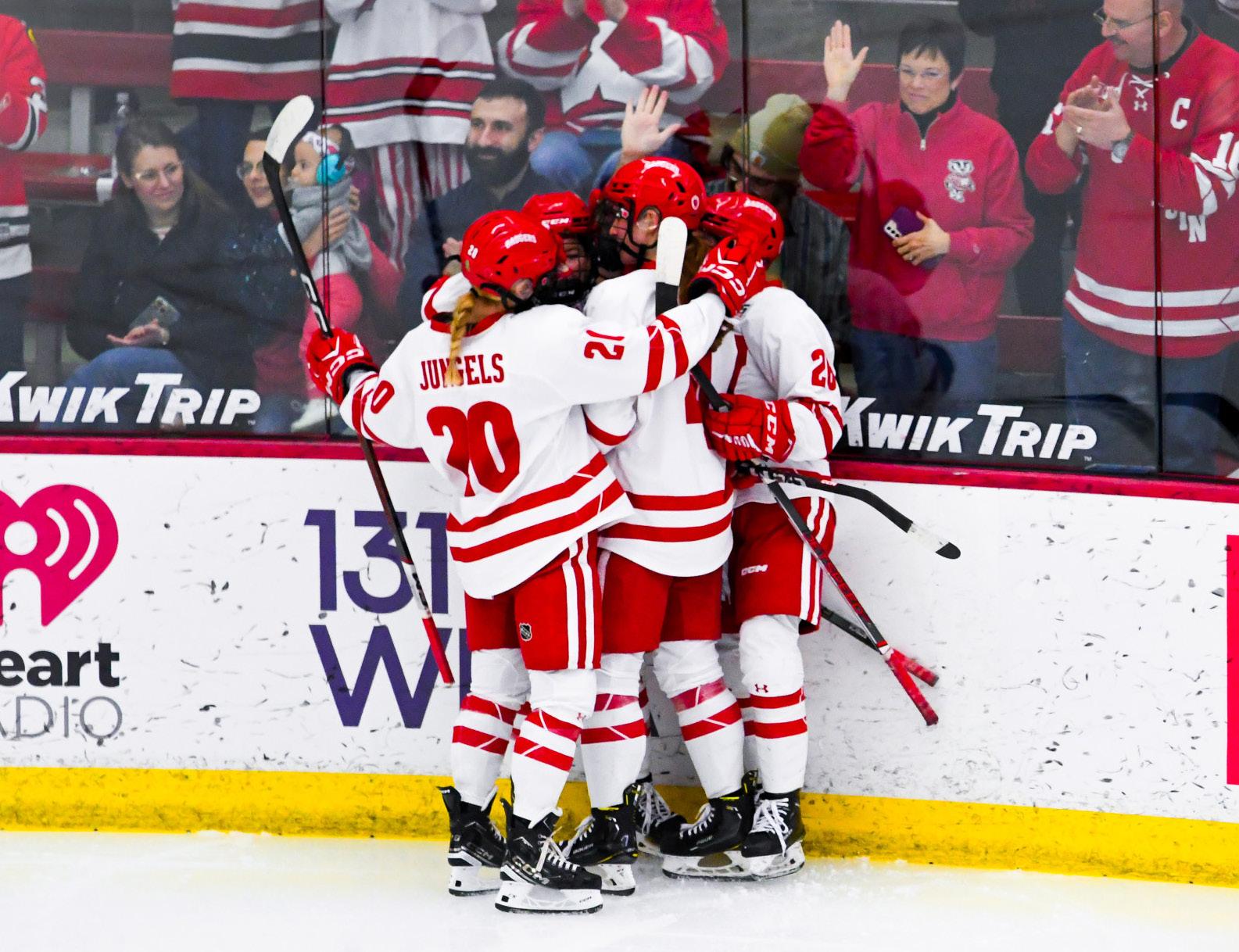
surable uptick in attention for women’s sports, given both the success of our Wisconsin women’s teams and that of other women athletes. Just in the past couple weeks, the first women’s sports bar in the Midwest opened in Minnesota. The bar is named What If because the owners wanted to finally create a place where women’s sports fans could enjoy their favorite teams and food, not hope a bartender would turn a game on.
“What if fans of women’s sports had a place to come together and cheer loudly for their favorite team on the biggest screen in the bar…with the sound on?” reads What If’s website. “What if they had a bar of their own?”
“For 2024, women’s sports are predicted to bring in $1.28 billion in revenue according to the Deloitte Sports Business Group, 300 percent higher than the last three years,”
according to MPR News. This surge in viewership is a motivating factor for owner Jillian Hiscock, who told MPR, “I jokingly say that every sports bar you walk into in the Twin Cities area is probably a men’s sports bar. We just don’t call it that.”
UW-Madison junior Jessica Male also emphasized the positive impacts that this recent surge in attention women’s sports have received.
Like others, she believed the dedication of women in sports deserves praise and respect. But while this rise in attention is good, she still saw a gap to close and believed there should never have been an imbalance in the first place.
After all, sports are a place where players work hard and show their talents, and everyone deserves respect and appreciation.
“It should have been like this the entire time,” Male said.
‘That’s our link’: How Badgers game days build perpetual communityBy John Ernst STAFF WRITER
It’s Nov. 15, 2014, and Jason Symes is rolling into Camp Randall with thousands of other Badgers fans to witness a key ranked matchup between No. 20 Wisconsin and No. 14 Nebraska. His cousin is getting married this Saturday, yet he sits with his friends in nosebleeds of the stadium, unaware of the feat he is about to witness.
Symes remembers a Nebraska fan jawing about their early lead. That is, until the snow started falling and Melvin Gordon started chugging. Gordon’s 408yard game on a snowy night in Madison set a record for the most single-game rushing yards in NCAA history.
“[Gordon] started rocking and rolling, the crowd was building up and the snow was coming down. It was one of the best environments ever,” Symes said.
Gamedays in Madison just feel different. From jumping around at Camp Randall in the fall to packing the Kohl Center and LaBahn Arena for
winter hockey, Badgers sports are for everyone. They bring together a community that sticks together through the good and bad.
“Me and my buddies, that’s how we keep in touch,” Symes said. “If there are Badger games on, we’re talking about [them],” he said. “That’s our link to each other.”
Symes is about as Wisconsin as it gets. He grew up on the west side of Madison, attended the University of WisconsinMadison in the late 1990s and has a family in the area now.
He remembers meeting his friends and exploring the stadium with brats in hand, enjoying the UW Marching Band’s 5th Quarter show after the game.
“I remember from a very young age… coming to the games with my dad, parking near where we live now, going down what is now the bike path, and all the energy surrounding a game,” Symes said.
Three decades later, students are still finding community among gameday seas of red of white.
Current UW-Madison
freshman Misha Simdon also grew up with the Badgers and has been a fan for as long as she can remember. She grew up with one of her cousins and said many family photos from her youth included donning traditional red-andwhite striped game bibs.
Simdon purchased student tickets for the men’s hockey games this season, cheering on Wisconsin with its raucous hockey student section, the Crease Creatures. She said she goes to the games with the same group of friends every Friday and Saturday night, typically arriving 30 minutes before the gates even open in order to secure front row seats.
Simdon said she uses the games as a way to decompress and get away from the stress of her freshman year. “Hockey and football games are a time that I’ve set aside from myself to have fun and take a break from my studying,” she said. School can be disheartening, she said, and described the feeling in the student section as “cathartic.”
One of her favorite memories was the Michigan series
in early November, when fans decked out in red “Creature Crawl” shirts for the Red Out in an “electric” arena. “They had the upper deck open because of the big rivalry,” she said. “Just because of the rivalry, it was more exciting, as someone from Wisconsin.”
For people like Symes who have witnessed decades of Badgers sports, it’s a special
treat to watch many players journey from rookie to captain in Cardinal and white. “It’s fun to watch these kids and see how much they grow and develop,” he said. “They leave as men after coming in as kids.”
Whether you’re in the student section, next to the play or in the nosebleeds, coming to a Badgers game makes you part of a historical community.
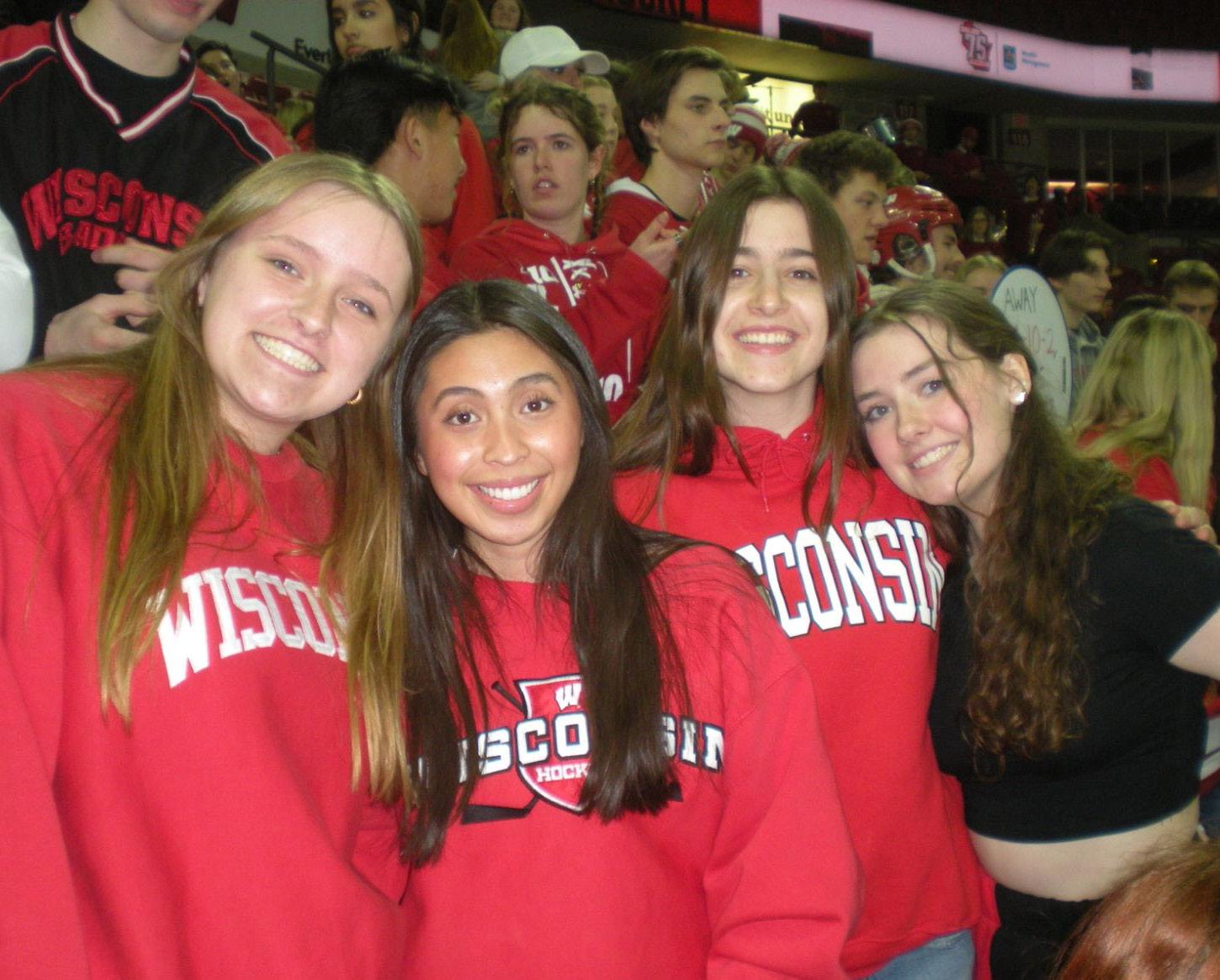
Art has always been a way for artists to send messages across generations. From the first depictions of religious scenes to the books of the 1900s, art pieces are snapshots of time passed down for future generations.
“Message from Our Planet,” an exhibit on display at The Chazen Museum of Art, fuses modern technology with age-
methods to “evoke a similar multi-vocal message by artists who share a human desire to be understood across time and space,” according to exhibit curator Jason Foumberg.
Foumberg said the exhibit, which features artwork from 19 international artists and artist groups, was inspired by Voyager 1, an interstellar time-capsule launched into outer space in 1977 by NASA.
“‘Message from Our Planet’
technology can be used to prevent climate change or how travel can contribute to it — using technology as a tool to intersect that discussion of technology and nature is powerful yet strangely eerie.
Being entranced into the pieces of artwork — forgetting it was a screen before seeing it grow and mold — serves as a testament to Earth changing before our eyes.

climate change — be it how
Even more traditional pieces take on a new life with the power of technology. Claudia Hart’s “The Seasons” stands as a perfect example of this effect: a seemingly framed “painting” of a sculpture of a woman takes on a new meaning as the sculpture starts to sprout seedlings.
The exhibit as a whole feels like a quieter Times Square; digital marquees, framed screens, attention-grabbing projections and other digital displays center around the core theme of how technology interacts with our environment.
Nam Lee’s “Cartoon Folding Screen II,” for example, uses five framed LED screens to depict a landscape art scroll to a dystopian scene as progressively louder music accompanies animation of classical pieces of artwork riding bombs across the once-deserted screen.
Tabita Rezaire’s “Sorry for Real” has viewers don a
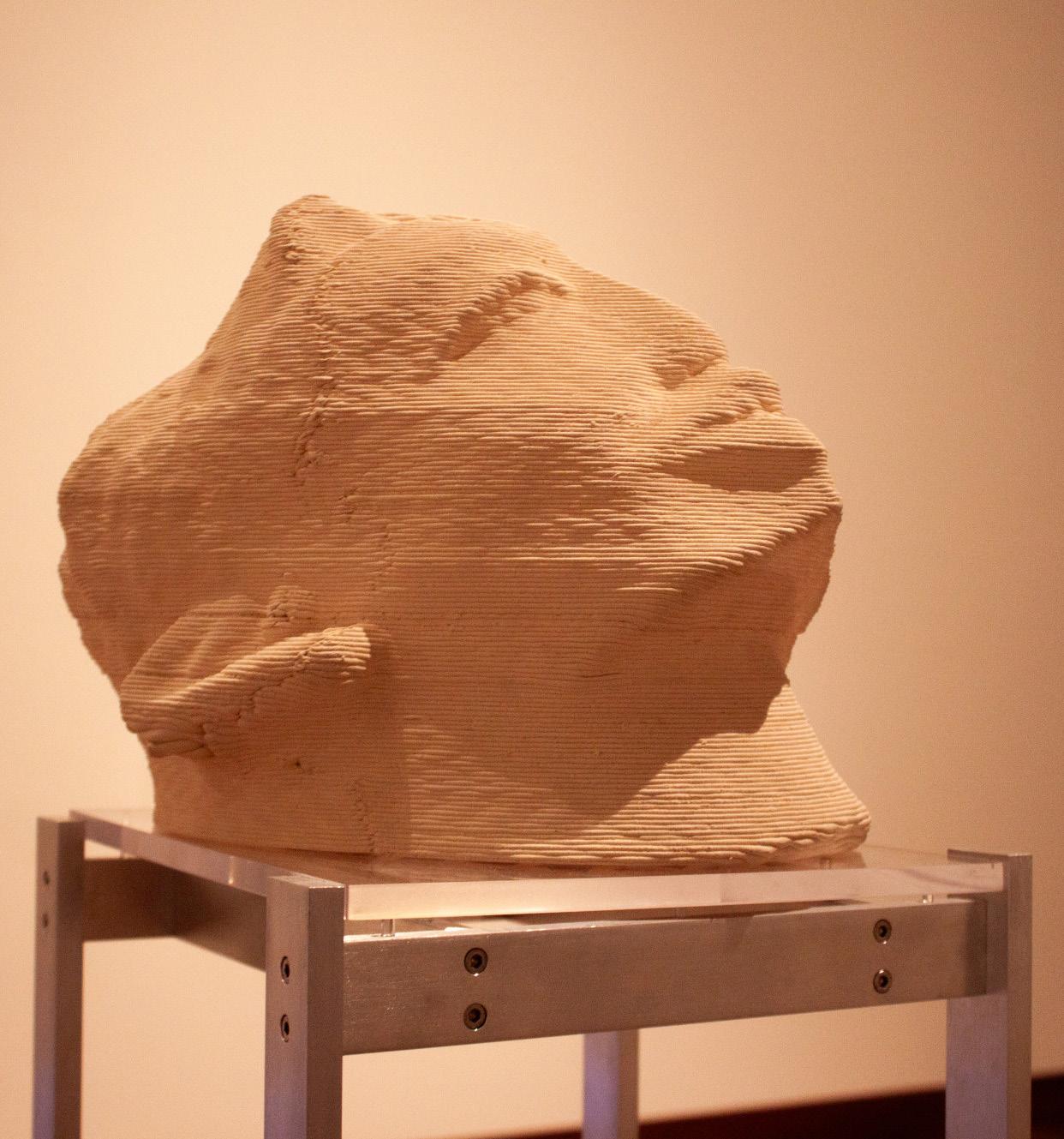
set of headphones and listen into a phone conversation as a projector displays a nowdated iPhone showing a call between someone and the “western world.”
Other pieces rely on non-digital methods like recycled computer parts or physical prints to convey art’s intersection with digital technology.
Although “Message from Our Planet” will particularly
resonate with individuals old enough to remember watching technology and the environment morph over time, it’s still a worthwhile exhibit for anyone to take a moment to reflect on how technology has changed the way we communicate and how we see our planet.
“Message from Our Planet” will be on display in Madison at the Chazen Museum of Art through June 2.
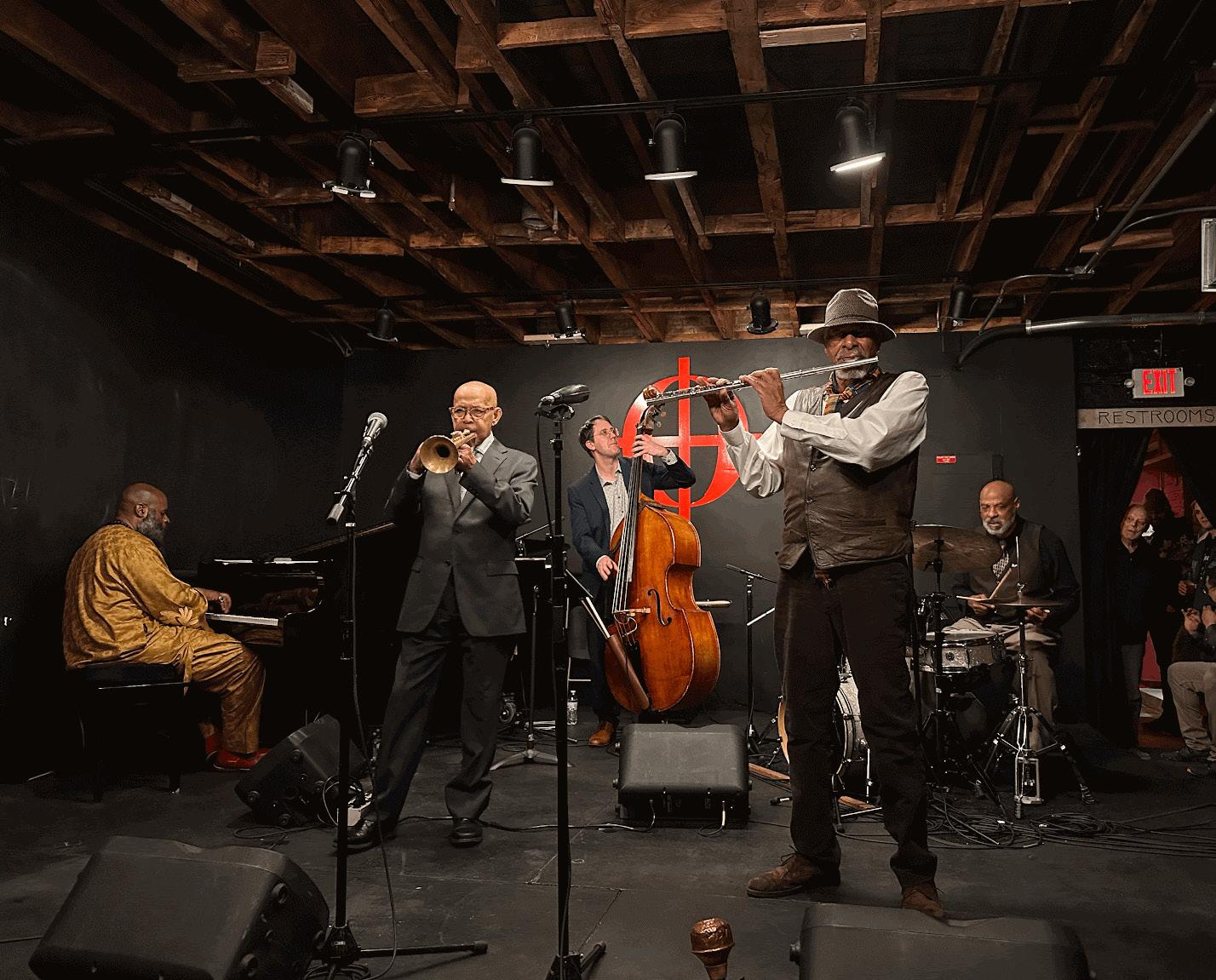 By Quinn Bogost STAFF WRITER
By Quinn Bogost STAFF WRITER
In the heart of Madison’s Williamson-Marquette neighborhood, jazz enthusiasts gathered to celebrate their shared love for jazz music at the third annual CodaFest.
Cafe Coda played host to three shows a day from March 7 to March 9, each featuring a lineup of renowned musicians. The jazz club was a packed house as people came to enjoy drinks and the variety of performances.
The club, located at 1224 Williamson St., is owned by well-established saxophonist
and flutist Hanah Jon Taylor. The cafe is a unique opportunity for Madison to experience musical excellence and community spirit. It opened in 2018 and hosts community events and jazz shows Tuesdays through Saturdays.
As you walk in, you are greeted by artwork from the greatest jazz cities in the world. Portraits of artists like John Coltrane and Nina Simone line the walls, hanging next to musicians who have worked with them or were inspired by them.
Taylor made it a goal to bring jazz from across the world to
Madison while also highlighting local talent. He brought in special artists including Isiah Collier and The Chosen Few, Adam Zanolini’s Heliacal Rising of Sothis, The Javier Red Trio, The Madison Jazz Orchestra, The Vincent David Quartet and trumpet legend Eddie Henderson.
Often, these musicians are performing with each other for the first time. Each talented in their own regard, they celebrate the essence of jazz by improvising as they play.
Taylor himself performed, joining double bassist and jazz veteran Reggie Workman on March 8. Workman is a notable jazz musician who has been in the industry for over 60 years. He has worked with legends like John Coltrane, Herbie Mann, Thelonius Monk and more. Together, Taylor and Workman performed avant-garde and moving compositions.
Taylor, a surprise guest, joined Eddie Henderson on stage to play his flute alongside him in Herbie Hancock’s iconic Cantaloupe Island, bringing the weekend to a close.
Despite his young age, CodaFest attendee Micah shared that he is a frequent guest, having been to over 50 shows. Micah also attends Cafe Coda’s Cool School, a free
opportunity providing youth with a platform to practice improvisational musical skills.
“I just really love being here, especially Hanah because of how accepting he is,” Micah said.
The show also appealed to first timers, including Grace, a University of WisconsinMadison student.
“I definitely want to come back. It was awesome how intimate it was,” she said. “We were so close to the stage and the musicians. Everyone here seems so cool, too: the staff, musicians and others.”
Cafe Coda boasts an inti-
mate venue. The stage is only a foot from audience seating, and you can have conversations with the artists themselves as you walk to the bathroom or sit at the bar. Taylor himself walks around, greeting guests and saying hello to familiar faces that keep coming back.
Micah applauded Taylor for the music he brings to Madison and the community he builds.
“You are having fun and being yourself,” he said of Cafe Coda. “Nobody cares what you look like; you are all here to listen to music and make music.”
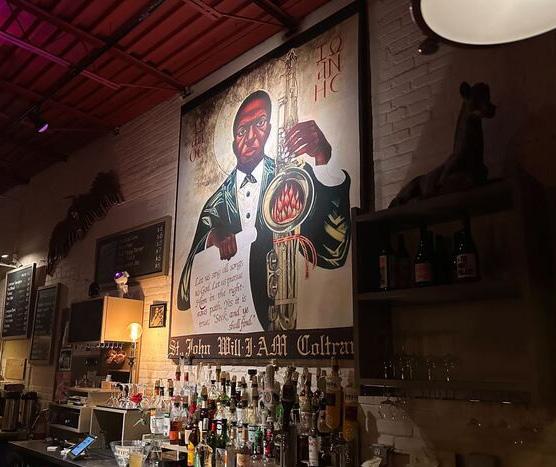
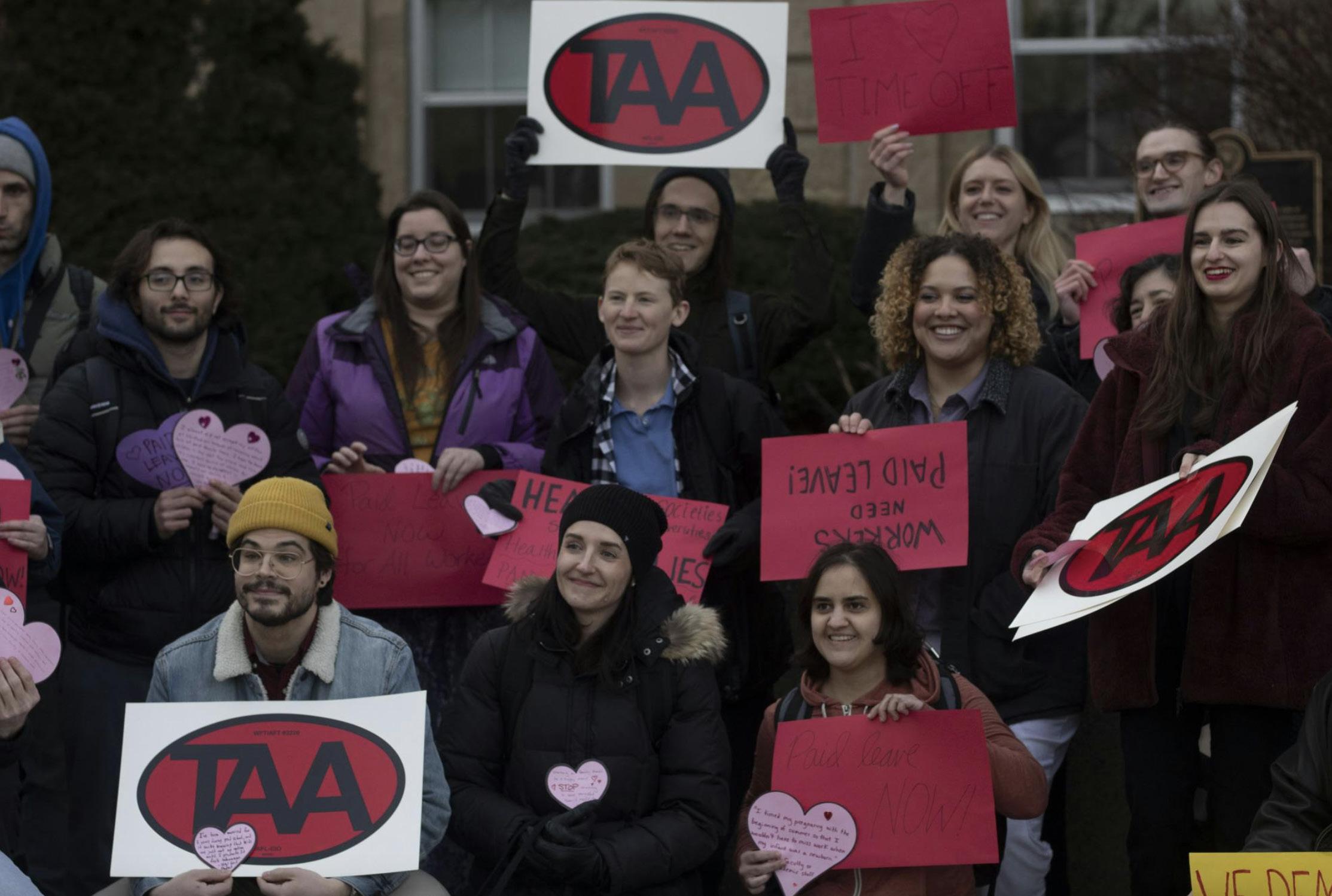

When Starbucks workers in Madison pushed for better working conditions and contract negotiations with their multibillion-dollar employer, University of Wisconsin-Madison student organizers looked for ways to bring the fight to campus.
With the support of local Starbucks union organizers, student activists with the Young Democratic Socialists of America (YDSA) introduced an online petition urging University Housing to terminate its contract with a Starbucks location housed in Smith Residence Hall by May 3.
The campus location allows Starbucks to make money without having to deal with unionization from the university employees that staff the store, according to Nathan Schilling, who serves as YDSA treasurer and works at the Starbucks location on Capitol Square.
“Starbucks gets the advantage of receiving money from this location for franchising costs, but they don’t have to worry about this location unionizing, which takes away power from other unionizing workers,” Schilling said.
The petition is one of many student activists have circulated on UW-Madison’s campus in order to push for changes to university policy surrounding labor, clean energy and paid leave for graduate student workers. Students behind online petitions said the virtual tool builds on-campus support networks and elevates student voices to university decision makers. Similarly, experts said online petitions can be effective
at swaying public opinion when part of a broader organized push for change.
“Part of it can be about creating community, part of it can be about mobilizing people into action, part of it can be fundraising, part of it can also be the petition itself getting publicity and making people aware,” said Dhavan Shah, a communications research professor at UW-Madison.
“That’s why petitions are so effective,” he added.
“They work in really complex ways even though they’re a very simple act.”
YSDA, workers put pressure on campus Starbucks
YDSA’s petition, addressed to UW-Madison Chancellor Jennifer Mnookin, cited Starbucks’ history of labor law violations and “anti-worker actions” as the reason behind its push.
Another facts was the company’s trademark infringement lawsuit against Starbucks Workers United, the largest union representing Starbucks workers. The coffee giant sued Workers United in October 2023 for using its logo on a statement in support for Palestine is another factor, Schilling said.
“Although the University of Wisconsin-Madison claims to be driven by the Wisconsin Idea, especially through its commitment to the community, the university’s contracts with companies like Starbucks do not reflect this sentiment,” the petition read.
As of March 12, the petition has collected nearly 300 of its 400 desired signatures.
able energy by 2035 and commit to sourcing all of its electricity from renewable sources by 2030. The petition also pushed Mnookin to add its signature to the Second Nature Climate Commitment, a statement signed by university chancellors and presidents across the U.S. pledging to create a plan to move toward renewable energy.
More than 2,000 students signed the petition as of March 14.
CLEAN social media executive Anna Englebert said the group gives university leaders the petition every semester to pressure administrators to change energy policies.
“This petition was made and is used with the intention to remind the university and its system of the widespread importance of renewable energy amongst students,” Engelbert said in an email.
The Teaching Assistants’ Association (TAA), the UW-Madison graduate student union, published a petition in spring 2023 demanding the university expand paid medical and parental leave for graduate students.
The petition urged UW-Madison to offer 12 weeks of paid leave, in line with a proposal Gov. Tony Evers included in Wisconsin’s 2023-25 biennial state budget.
As of March 14, the petition has more than 720 signatures, according to the TAA’s website.
The petition represents the power of “a high number of graduate students standing together,” according to TAA Co-President Madeline Topf.
“When we stand together, we can strongly demand
necessary change,” Topf said in an email. “And it is only through standing together, as a union, that we will be able to improve our working conditions.”
Online petitions can serve as an effective tool for communities to voice their concerns or aspirations to more powerful local decision makers, according to research conducted by the American Institute of Physics. They also raise awareness of an issue and provide an easy way for people to express their support for change.
What’s more, online petitions are an accessible gateway to other forms of activism, according to Shah, the communications professor.
“Signing a petition is pretty light work. It doesn’t take us a lot, especially in the digital age, to add our signature or something,” Shah said. “But then there’s what we call expression effects — when we express ourselves and we attach our name to something when we post about it, we become more likely to behaviorally follow up on it.”
Online petitions are most effective when part of a broader, sustained campaign, Shah said. Petitions spread messages to new supporters with lower barriers to entry, and signing is often a first step toward more involved forms of activism like protests or boycotts. But petitions run into problems competing against other news stories and topics for the public’s attention,
Shah said. When causes can’t sustain attention and support, they run the risk of fading from headlines and from public consciousness.
Still, he said online petitions can sway public opinion if they garner widespread support.
“All that publicity helps in a way, and I think it can shape public opinion,” Shah said. “Even just seeing those petition signers might reassure us, and seeing other people posting about it says, ‘Oh, other people think this way. Oh, I can join them.’”
Schilling echoed this sentiment. Although petitions on their own are easy to ignore or disregard without pressure to respond, they’re one of many tools activists use to extend networks between activist organizations and reach new supporters.
“They’re a tool that you can use to show to the organization that you’re petitioning [that] we have popular support, but you’re also going to have to put pressure on these people outside of that,” Schilling added.
And if Starbucks pulls back from negotiations with workers, Schilling and Cartwright said the petition effort will resume until workers, with the help of student signatories, successfully pressure the company to return to the table.
“As long as Starbucks continues to come to the negotiating table, and they do so in good faith, then there shouldn’t be any further problems,” Cartwright said.
“But if they continue to break their promise of being pro-customer and pro-worker, their workers and their customers aren’t going to tolerate that.”
In between St. Patty’s Day party recaps and cute cat pictures on Instagram, you can also find infographics explaining the rise of fast fashion, online petitions and phone numbers of legislators to call. Many of these posts come from advocacy groups who find a home for their work on social media.
What brings these groups to Instagram?
“We’re very, very visual,” said Tessa Price, an organizer with Trans Advocacy Madison. “We like pretty images.”
offline efforts for tangible change.
“A lot of what we do is trying to redirect people and say, ‘Hey, you found this here, and that’s great, you can go deeper into it, you can fight for stuff on the streets if you want to,’” she said.
Price cited an event the group put together on Oct.
“People were able to feel that community there, that they’re not alone, that they’re not being completely destroyed by the system, kind of give people a safe place to be when they’re dealing with these super serious political issues,” she added.
YDSA and Starbucks workers put the petition effort on hold after the company announced it would begin negotiations with Starbucks Workers United. Schilling said they believe the petition and similar efforts on more than 20 other campuses played a role in Starbucks’ decision to negotiate.
“I do think that in part is because of organizations on campus that were trying to get Starbucks off campus,” Schilling said.
The petition effort also helped raise awareness of workers’ concerns among students and put pressure on Starbucks to negotiate, according to Starbucks shift supervisor and union organizer Matthew Cartwright.
“The vast majority of students on UW’s campus probably don’t support union busting and probably support labor,” Cartwright told the Cardinal. “But I also think for many students, especially when you’re consumed with studies [and] going about your day-to day-life, [are] not necessarily thinking about the workers you see every day.”
Student petitions take aim at UW’s climate, paid leave policies
Campus Leaders for Energy Action Now (CLEAN), a student organization dedicated to promoting a transition to clean energy on campus, has used petitions to pressure the university to take greater action on climate change and build student support for green energy policies.
CLEAN’s website features a petition demanding UW-Madison commit to using 100% clean and renew -
As Instagram becomes a home for advocacy groups looking to share information on social causes, activists are adapting to nontraditional means of communication. That includes Instagram, a highly visual platform where graphic design aids grassroots organizing.
This sentiment was echoed by Amanjot Kuar, cofounder and president of the Student Voters Union (@ studentvotersunionuw), a nonpartisan student organization created to improve student voter access.
“[Instagram] is great for posting graphics, educational content in the form of posts or story highlights and short videos through Reels,” Kuar said.
Kaur also said Instagram features like reels and story highlights make advocacy easier compared to other platforms. The Campaign Workshop, a political consulting firm, tells its clients “a picture is worth a thousand words” about Instagram’s pictures-only format.
Part of the reason why these features are so successful is they allow for complex issues to be partially summed up in easy-to-understand infographic slideshows, according to Teen Vogue.
For example, the Student Voters Union uses the Instagram “link-in-bio” feature to guide its followers toward further resources like voter registration instructions.
But in Price’s view, Instagram is built to keep people scrolling. “It feels a little bit like you’re battling the social media companies,” she said. “They want you to stay [on the website] and fight about silly stuff.”
Although Instagram offers an easy way to share information about issues and build a social media presence that reaches people where they are, Price said activist groups like hers need that energy to flow into

4, 2023, as an example of success. The group used Instagram to organize a snap demonstration against a Republican-led state bill that would ban transgender girls and women from competing on high school and college women’s sports teams. Their post — which used simple black wording the colors of the transgender pride flag — spread word about the event and inspired a sizable turnout, Price said.
This idea of connection with an online audience is also what drew Promoting Awareness Victim Empowerment, better known as PAVE, to Instagram. PAVE (@paveuw) focuses on issues like sexual assault, stalking and domestic violence by creating awareness and advocating for victims.
“Instagram is useful in activism because it allows us to directly see feedback from students almost instantly,” said Maggie Khan, PAVE communications coordinator, “Students readily comment and send us DMs to questions that might go unanswered for longer periods of time if sent via email or feedback Google forms.”
With interactive communication comes speed, which Kaur said was another reason the Student Voters Union values Instagram.
“Word spreads quickly on Instagram without us having to spread ourselves thin or have a really large base of members in our student organization,” she said. “We use the website to spread information to students outside of our circle and reach out to other student organizations who may share our values and support our ideas.”
Trans Advocacy Madison has similar views, according to Price. She said Instagram quickly connects Trans Advocacy Madison to like-minded groups that amplify information, like Fair Wisconsin and the ACLU.
“Already, by sharing our petition through Instagram, we have gained over 50 signatures in a week,” Kaur said, referencing Student Voters Union’s campaign to have UW-Madison ID cards, or Wiscards, count as a valid form of state voter ID.
For PAVE, Trans Advocacy Madison and the Student Voters Union, Instagram has proven to be a valuable resource for getting comprehensible information out into the world on behalf of their advocacy missions.
“Having that community, having that connection to an action or to some sort of collective political power is really empowering for people,” Price said.
Climate change threatens a crucial part of Wisconsin cultureBy Lauren Fieweger STAFF WRITER
Just underneath the surface of Lake Mendota lies one of the true hallmarks of Wisconsin culture: walleye.
Walleye are a freshwater fish prevalent in Midwestern rivers and lakes. In 2019, the Wisconsin Department of Natural Resources estimat ed that 21,302 adult wall eye were present in Lake Mendota — around 2.2 fish per acre.
Named for their opaque “glassy” eye which helps them see in low-light conditions and sporting a spiny dorsal fin and sharp teeth, walleye have become a key player in Wisconsin society.
In ecological terms, a community is a group of spe cies in a particu lar location that interact and coex ist with one another.
While many neglect to recognize humans as part of the local ecological com munity, their actions heav ily affect the health of the ecosystem and the health of the ecosystem affects human social behavior.
seen in Wisconsin. Each year, the Wisconsin State Climatology Office documents the freeze-over and thaw dates of Lake Mendota. The 2023-24 winter recorded only 44 total days of ice cover, significantly lower
Warming waters create thermal stress which constitutes increased stress and energy use, Smith said.
Walleyes central to Wisconsin Heritage
Effects on walleye
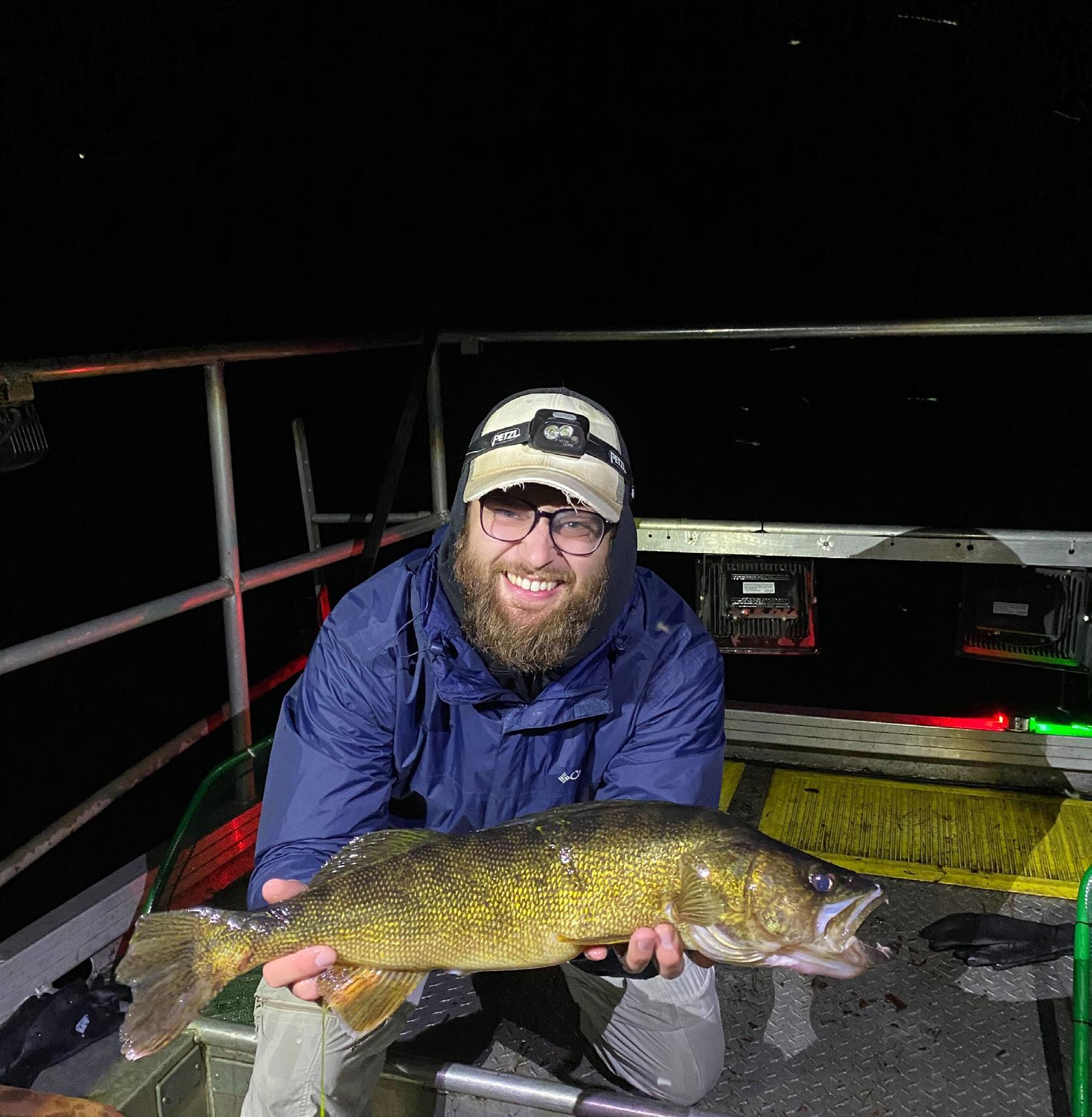
That’s particularly true for walleye, a species vulnerable to climate change effects on freshwater ecosystems. But researchers and fish enthusiasts alike said they are dedicated to the protection and conservation of walleye across Wisconsin.
“This is a really important natural resource, so we want to do our best to conserve that and make sure that the next generation is able to utilize that as well,” said Quinnlan Smith, a doctoral student with the Center for Limnology.
Anthropogenic greenhouse gas emissions over the last century have contributed to devastating environmental effects and risk the demise of many local populations. The World Meteorological Organization (WMO), a subgroup of the United Nations, has been studying the changes in our climate for decades. It found the global mean near-surface temperature in 2023 to be about 1.4°C greater than the pre-20th century average. It also reported sea levels and ocean temperatures are rising.
Climate change can be
Currently, tribes like the Bad River Band of Lake Superior Chippewa are some of the leaders in conservation of the water resources, including detailed management plans along with the operation of a large-scale walleye fish hatchery to keep numbers high in nearby rivers and lakes.
On top of its importance to Indigenous communities, walleye fishing is also known as a popular recreation opportunity for people across the state. One group reaping the social benefits of fishing is the Wisconsin Fishing Team.
“[Fishing is] just a good excuse to get together with friends and family and enjoy time outdoors and utilize the natural resources that we’ve been given,” said Joseph Trukowski, president of the Wisconsin Fishing Team.
“
I remember just growing up always being on the ice with my grandparents, and I think that’s common for a lot of Wisconsin families.
- Jeremy Kolasa, Wisconsin Fishing Team managing directoring keeps a sense of community alive, even through the coldest of days.
“I remember just growing up always being on the ice with my grandparents, and I think that’s common for a lot of Wisconsin families,” said Jeremy Kolasa, Wisconsin Fishing Team managing director.
Human-caused climate change has made it difficult for walleye to continue to thrive. To preserve walleye as a source of culture and community, researchers have focused on conservation and management techniques.

They’re one of the first species to spawn. Usually that ice off is a really good indicator of when these fish are going to move into the shallows and spawn.
- Quinnlan Smith, limnology Ph.D. student
walleye are a central part of Wisconsin culture.
Many Indigenous tribes in the area have long-standing traditions related to spearfishing walleye and other local fish. Historically, this has led to clashes between Indigenous and non-Indigenous fishermen.
place for me to find my foot ing and where I want to be,” said Eli Weiser, Wisconsin Fishing Team community service coordinator.
While walleye fishing is popular during the summer months, it takes shape as a unique Wisconsin sport during the winter. Ice fish-
mental lake, according to the Wisconsin Department of Natural Resources. Researchers are able to test the effects that particular policies have on the prevalence of fish in the lake. These results are then used to determine what conservation and management strategies should be implemented in other Wisconsin lakes.
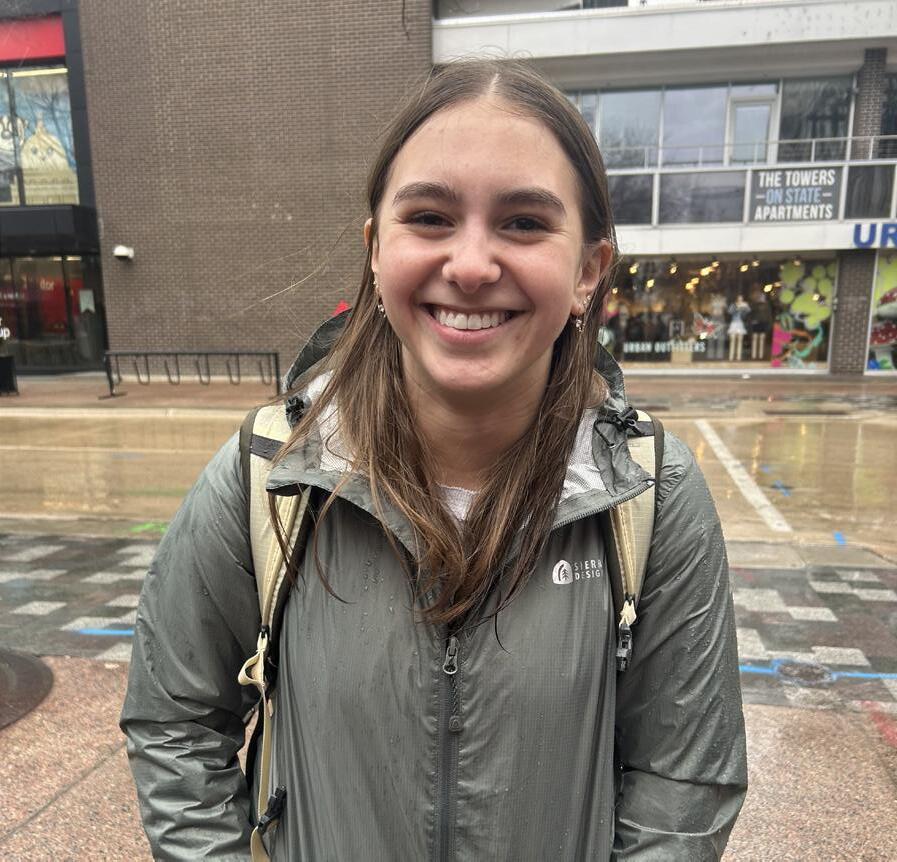
Beyond social interactions, Leah Repenshek found a changing communication landscape primarily affected her academic experience during the pandemic.
It’s an impact she felt separated her experiences from those of different generations.
“My life has changed the most in terms of school and communication, [which] was challenging with online classes and technology,” Repenshek said. “That was very different from life for my grandparents and my parents, where besides work, it didn’t shift things as much.”
Repenshek said the pandemic made online platforms the new normal for interaction. This created barriers to learning, such as difficulties communicating with teachers, receiving individualized help or accessing education resources that could help students succeed in a new, virtual
Bradley Wellikson said the sharp increase in digital communication during the pandemic resulted in him feeling “chronically online,” a term he used to describe a lifestyle heavily influenced by digital interactions.
“There is just so much more technology in my life than before, which can be both a good and bad thing,” Wellikson said.
Being chronically online is a reflection of increased technology usage. Approximately one in six say they use TikTok and Snapchat “almost constantly,” and 54% say that it would be difficult to give up social media, according to a 2023 study from Pew Research Center.
This dependency can shape worldviews around digital trends that significantly influence their interactions within the real world. From misinterpreting what is “problematic” to fostering obsessive speculations over Kate Middleton’s disappearance from the public eye, being chronically online blurs the line between the digital
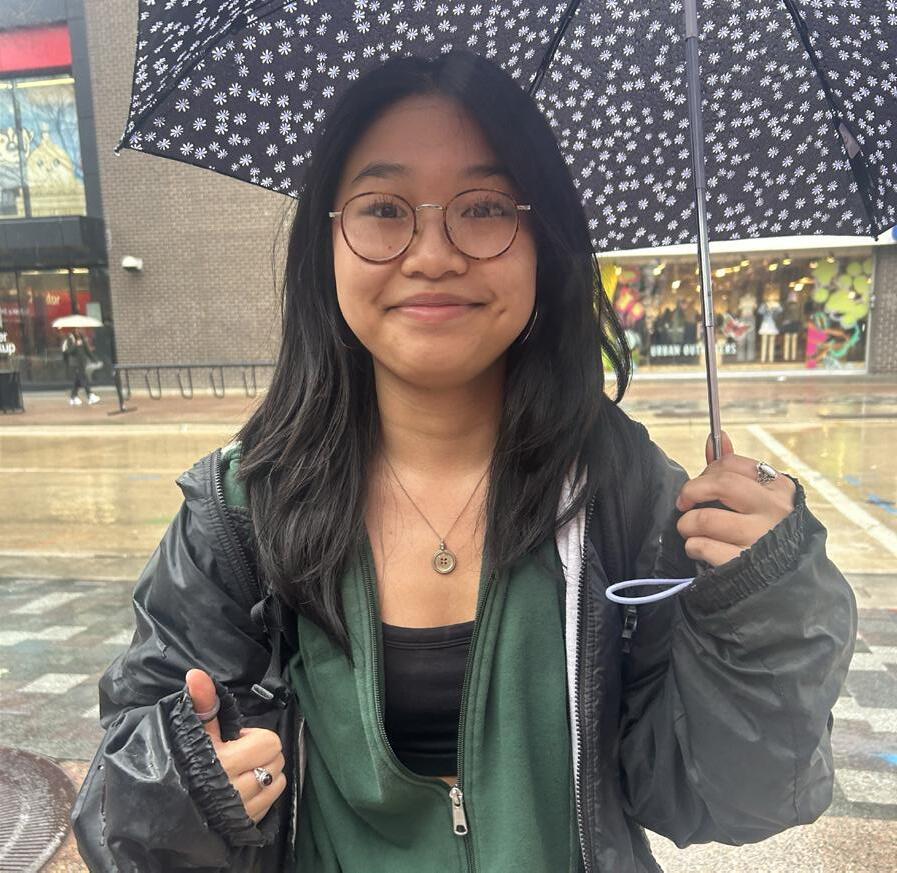
space and real-life events or concerns.
learning environment.
With classes overwhelmingly offline again, Repenshek said she feels in-person exchanges allow individuals to connect more. She said in-person communication methods impact both education but also relationships.
“Communication during COVID was pretty strictly online, but I feel like recently that has changed a little bit and gone back to largely being a mix of both,” Repenshek said. “It has helped us not take in-person interactions, [whether] personal or school-related, for granted.”
Repenshek said navigating a pandemic-era world where traditional methods of interaction were upended taught her the importance of open and continuous communication.
“I feel like it is important because you don’t know when something like that could happen again. It’s important to communicate with your loved ones and everyone as much as possible,” Repenshek said.
Although the increase in digital communication has potential to make an individual overly immersed in online culture, Wellikson still finds it offers unique opportunities to strengthen relationships by connecting on social media or other communication apps.
“My style of communication [as a result of the pandemic] has probably become more online and less in-person, but I do have more frequent communication with friends who aren’t in visiting proximity or live far away, so that has been a plus,” Wellikson said.
With this, Wellikson said he prioritizes using technology to check in on others and maintain a focus on mental health, and he’s noticed pandemic-era pressures impacted individuals to different degrees. He saw communication as crucial in supporting wellbeing and fostering a sense of community in uncertain times.
“It’s important to stay up to date," he said. "Especially after the last four years, and given that a lot of people went through mental health crises, I'm a little bit more focused on checking in."
Hana Heidenreich is a 20-year-old UW-Madison sophomore who said COVID had little effect on her means of communication over the past four years but instead impacted broader societal views on physical and mental illness.
Heidenreich said she felt an increase in news communications and technological development during the pandemic made a wider population more conscious about illnesses overall. She said this had a more profound effect on her parents, who became “more accepting of the precautions of COVID.”
For Heidenreich, these factors prove the power of developing technology and the importance of striving for non-biased mass communication.
“I'd say that I'm more accepting of the precautions

of COVID, and they're still like sticklers that it didn't really exist. So I feel like it's brought in more awareness to the precautions you should take for illnesses,” Heidenreich said.
Although her interactions have become “more virtual,” Heidenreich said she still enjoys prioritizing in-person interactions with family and friends. The greatest lesson she learned was the importance of taking the time to empathize with others and escape isolation.
She cited a growing toll of post-pandemic mental health concerns and long-term physical health complications as reasons for greater empathy.
“I think it's really important because when we're isolated for so long [people] forget to check up on one another because everyone's so used to just being self reliant,” Heidenreich said.
For 22 year-old UW-Madison senior Ryan Johnson, post-pandemic changes in his life revolve around more constant engagement with family, getting more involved with coaching youth baseball and more purposeful conversations with friends and coworkers.
“My lifestyle didn't really change much,” Johnson said. “I was still going out to baseball tournaments and coaching, because they still had the tournaments.”
He said the pandemic better connected him with his family in Nebraska. Since 2020, Johnson said he talks to his family more, especially his mom and sisters, and looks forward to family gatherings whenever they come around.
He has since shifted toward a “preference to not use technology to talk,” rather having more in-person conversations. While Johnson said he felt fortunate to maintain his lifestyle at the start of the pandemic, at least when it came to work and daily activities, he believed other generations and those who worked from home had to adjust their habits more.
And while Johnson claims that he is far from perfect at checking in on those closest to him, it is something he wants to work on going forward.
“I don't think I check in on people the most. I think I'm probably a poor example of that. I will check in with you when I see you,” Johnson said. “ I've kind of enjoyed the aspect of but it's probably more of my preference to not use technology to talk to people more in person.”
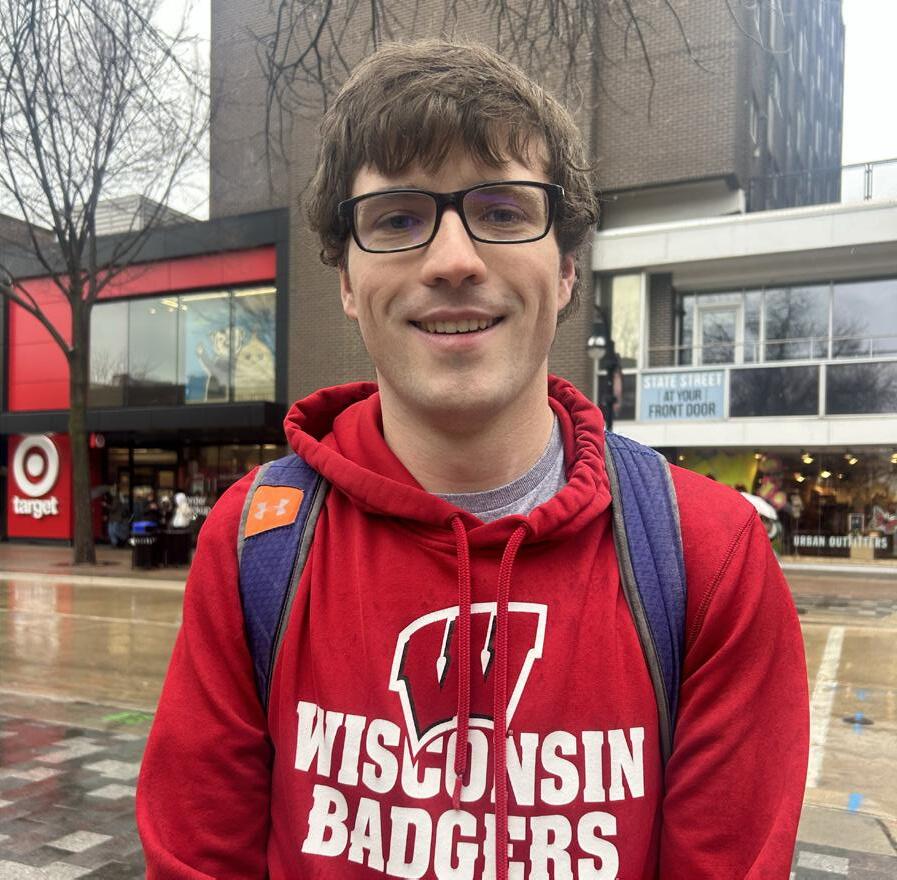 MOLLY NICHOLS/THE DAILY CARDINAL
MOLLY NICHOLS/THE DAILY CARDINAL
MOLLY NICHOLS/THE DAILY CARDINAL
MOLLY NICHOLS/THE DAILY CARDINAL
MOLLY NICHOLS/THE DAILY CARDINAL
MOLLY NICHOLS/THE DAILY CARDINAL
The University of WisconsinMadison is no stranger to demonstrations from political activists on campus, and that’s especially true this school year. From proPalestine protests to demonstrations against far-right speakers, campus has seen its fair share of political discourse.
Meetings like these raise the question of what the university’s role in political disputes should be. Should UW-Madison have zero involvement in First Amendment-protected actions, or should the university step in to prevent a hateful and harmful culture on campus?
“With everything being very controversial these days, I honestly believe there is not a whole lot the university can do in order to respond. No matter what they may say on an issue, there will always be problems,” said UW-Madison freshman Nathan Kim.
Kim, who is Asian American, has participated in a handful of demonstrations but said he believes the university does not need to get too involved in anything not too serious.
“Unless someone is being directly harmed, there is nothing wrong with the university watching from the sidelines,” Kim said.
Kim’s views represent a wider sentiment among some students that the university should take a back seat in political matters among its students.
For many, these demonstrations are removed from their campus experience and don’t occupy their thoughts. But for others, engaging in political disputes is a major part of their student identity at UW-Madison.
“It is important for the university to display their involvement
during times of conflict and controversial current events,” said Logan Lutz, a freshman.
So what has the university done in the past to settle these disputes?
Aside from releasing statements apologizing for those who felt victimized by the protests, not much. The university should respond by working towards establishing open lines of communication with protest groups, much like the University of Virginia has begun to do in response to recent graduate student protests.
Disputes that are inherently violent and hateful should have no place on campus, and the university needs to take a stronger stance on this matter to ensure its students’ safety. The neo-Nazi rally last semester is one example of the kind of behavior that should not be tolerated in any way.
However, even peaceful demonstrations can still have negative impacts on individuals who might feel offended, given how polarizing political conversations can be.
“It is extremely difficult for the university to make everyone happy when it comes to political matters, so honestly the best course of action is to just maybe host dialogues about certain issues,” said Jiwoo Hong, a freshman.
The university should extend its resources and support to students engaging in positive and healthy political discussions by hosting sessions that educate protest groups on how to create a positive political environment. These sessions could see university faculty actively helping student groups define their goals and assisting in building management structures within the group to allow for the advancement of these goals.
UW-Madison should also open up communications with its students and staff members through these protest refinement meetings,
ensuring a place of safety and understanding for politically charged conversations. The university can create guidelines that help streamline and assist student groups’ abilities to communicate their message while keeping other students or individuals who may feel hurt by certain demonstrations in mind.
As of now, the university has a strong statement that outlines their position on protesting.
“[UW-Madison] values free speech both in the statement of an idea and in the response to that idea,” the statement reads. “Generating and exploring innovative ideas and realities requires us to permit multiple perspectives and dynamic discourse. We are committed to freedom of expression and the right to assemble.”
This statement displays the right way to attack complex current events. In order for the university to appeal to the most people possible, they need to have this “free speech” type of attitude for most topics.
UW-Madison should provide these educational sessions on protesting for students who feel hurt or victimized by disputes on campus as well. Not only would this act as a means of communication between protesters and individuals affected by political demonstrations, it would allow university faculty to make better informed decisions.
While these demonstrations should be allowed and can help create a healthy political environment, the university needs to consider those who might feel attacked by certain discourse and should do everything in their power to help them.
Recently, members of the Associated Students of Madison, the university’s student government, have taken steps toward this goal. ASM has begun to host meetings that give students the means to voice their thoughts
When I first moved into my dorm in August 2021, I watched my mom’s minivan drive away, and I knew I was ready to begin the best four years of my life. I planned to spend my first night on campus knocking on doors, introducing myself, getting dressed up, getting lost and meeting people.
Instead, I walked to the State Street Walgreens, bought the shampoo I had forgotten at home, walked back to my dorm and went to sleep. By the end of September, I was ready to go home.
My first month at the University of Wisconsin-Madison was defined by the most intense feeling of loneliness I ever experienced. I couldn’t understand why I felt so alone on a campus of approximately 50,000 people. Was it because I had lost some of my social skills since the pandemic started? Was it because I had ended up in one of the Lakeshore dorms at the bottom of the freshman social pyramid? Or was a social life at a Big Ten university just not for me?
Three years later, I know I just needed to breathe and be patient.
According to researchers at Boston University, over two-thirds of students struggled with intense feelings of isolation and loneliness in the wake of the COVID-19 pandemic. Now more than ever, college students place too much pressure on themselves to find relationships that define the best four years of their lives.
But that mindset is part of the problem. If you feel like I did freshman year — incredibly alone on a college campus — know that you aren’t.
Leaving home for the first time is terrifying, but we make it through by promising ourselves there’s something better on the other side. Your mom might not be doing your laundry anymore, but hey, at least you’ll be attending the best party of your life every weekend, right?
Probably not. Instead, the start to your “best four years” begins with an uphill battle to find someone to sit with at the dining hall. That’s perfectly normal, even if it’s a bit of a letdown. But when we

and feelings on any current issue. Actions like these will help build a more positive and informed political culture on campus as leadership within the university can create welcome changes that benefit all sides of different dialogues. Although more understanding and active listening from the university on these matters will help, it’s important that a line is recognized on how much administration can interfere with political disputes. Meetings between university staff and protest groups should never result in actions that restrict freedom of assembly or hurt a groups’ ability to communicate their message, such as the decisions recently imposed by Stanford, MIT, and Brown that resulted in condem-
nation of student protesters.
Overall, responding to protests and demonstrations on controversial topics presents a significant challenge for the university. Striving for an ideal reaction in complex and diverse situations is particularly difficult. In other words, it’s impossible to make everybody happy.
UW-Madison should continue to respect protesters and politically active members of the community as well as their right to hold demonstrations and take part in charged dialogue. That being said, the university should continue to increase their attentiveness to student groups’ and individuals’ wishes and activities to better serve students and the community as a whole.
expect nothing but the best, it feels impossible to understand why we spend so much time alone.
The transition from high school to college is hard, and finding “your people” can be difficult, but you just have to keep trying. Often, the start to your best four years can be something random.
Before I came to campus, I joined the Class of 2025 Facebook group. From there, I met someone I planned to live with, but things didn’t work out. Instead, they invited me to their graduation party, where I met someone who told me to try out for the Mock Trial team. I went home, went to bed, and we didn’t talk until I came to campus.
Two months passed, and the end of September came. Instead of exploring Madison, I had spent my time in my dorm watching The Last Man on Earth and eating microwavable cups of Mac & Cheese. But then I saw a flier advertising the student org fair and remembered my conversation from all the way back in August. I walked to the Kohl Center
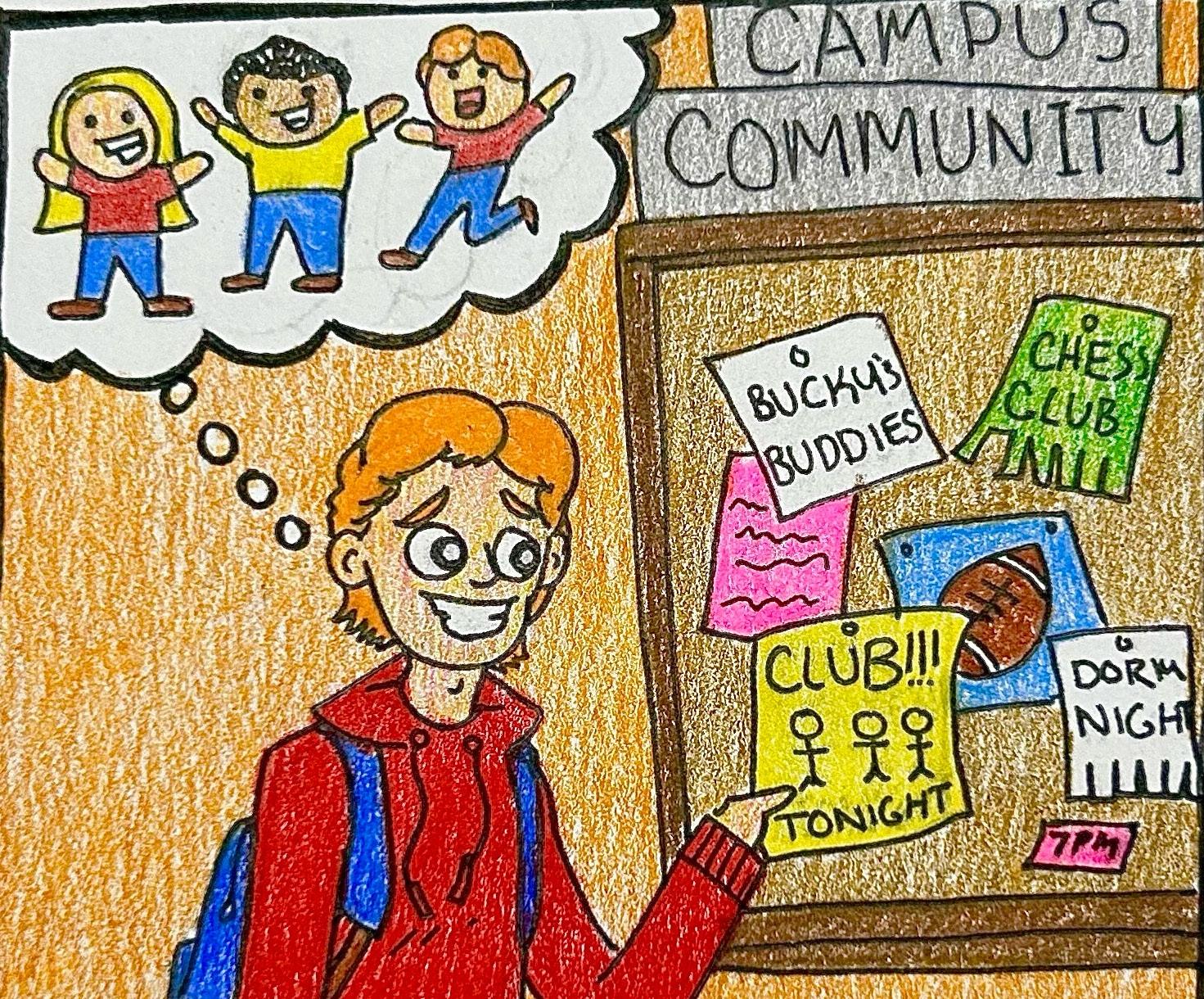
and signed up for a tryout spot on the Mock Trial team. I spent an hour and a half preparing. I walked out of auditions convinced I wouldn’t get a call back. That same week, I spent an hour on the phone with my mom. I told her I never thought getting new friends in college would be this hard.
Then I got the call. I made the team.
Now, I’ve been a member of the Mock Trial team for three years. The person I spoke to at that graduation
party is my future roommate, and five other names from the sign-up sheet are the friends I’ll force my kids to call “aunt” and “uncle.”
But there is a world where I didn’t try. I would have never met my closest friends, and I wouldn’t have known the difference.
Life on a college campus presents the opportunity for the best years of our lives, but they don’t just fall into our laps. Sometimes, finding your community is completely random. You just have to keep trying.
The alarm was set for seven. I woke up at eight.
I pressed snooze too many times, and now I’m going to be late. No time for breakfast. Not a full shower today.
My shirt is a bit wrinkled, but I guess that’s okay.
I expect traffic to be a nightmare, mentally it will cause me pain.
I know what would fix this. Please just give us one more lane.
Leave my apartment, pat my pockets, triple check the locks.
Start my car, let out a deep sigh and affirm myself with “my life rocks.”
Oh jeez. Oh man. I forgot my phone. Today is going to be scary.
Turn on the radio instead of listening to my playlist. Traffic report tells me to be wary.
Roads are backed up. Every day feels the same.
I know what would fix this. Please just give us one more lane.
I attempt to turn out onto the street to a long wait.
It’s 8:50 now, I’m going to be more than late.
I need to come up with some excuse; we have a podcast taping this morning. Something grand and believable that makes waking up late not boring. Finally move onto the street to immediately have to stop. It’s making me feel insane. I know what would fix this. Please just give us one more lane.
The commute
Time’s continuously slipping, and whatever excuse I can come up with will be poor. Cars upon cars flooding the streets, to get over is a war. There are too many people. I tell myself thinking I’m not part of the problem. There’s a simple solution that can fix everything. I know what can solve them all. One more lane will make all the pain and strife disappear. But I’m worried about the NIMBYs and their refusal to hear any solution that would fix the city would be turned down again. I know what would fix this. Please just give us one more lane.
Our cars are the ticket to living life in the city.
Public infrastructure is okay, but Metro is frankly shitty. You tell me to just wait for the BRT, that will make everything better. But more buses and restricted lanes will cause cars to fetter. We can be so much freer if we use eminent domain.
I know what would fix this. Please just give us one more lane.
Wind blasts through my hair, endlessly I’ll pay for gas and maintenance because I don’t see another way. You mention walkable cities but think of the cars. Where will they go?
Parking is already hard enough for my gas-guzzling Tahoe.
Criminal speeding with poor visibility in the pouring rain. I know what would fix this. Please just give us one more lane.
Lobby for more freedom
I decided to be the change I want to see.
I’ll go door-to-door knocking for neigbors to hear my plea.
A Common Council meeting is where I’ll state my case. Register for public comment and cry for the need of more space.
“Madison’s leaders,” after a 2:55 ode to cars I say, “we need to spend a—”
Cut off. My time is up. My comment wasn’t pertinent to the agenda. Surely my passion for freedom will garner me fame.
I know what would fix this. Please just give us one more lane.
But yet there is a chance. This year is an election year, so I’ll throw in my hat.
Since no one else will think of the cars, I’ll step up to bat. “Take down the parks, bike lanes and neighborhoods!”
It sounds concerning to most, but I’m running for the public’s good.
I will be a single-issue candidate with one thing centered for my campaign. I know what would fix this. Please just give us one more lane.
I didn’t win. My cause fell on deaf ears.
Now for the next two years, every driver will live in fear.
As long as I breathe, my mission will be just.
Next election cycle, I know what to do. It won’t be a bust. I promise to cut down on all of our commutes throughout Dane. I know what would fix this. Please just give us one more lane.
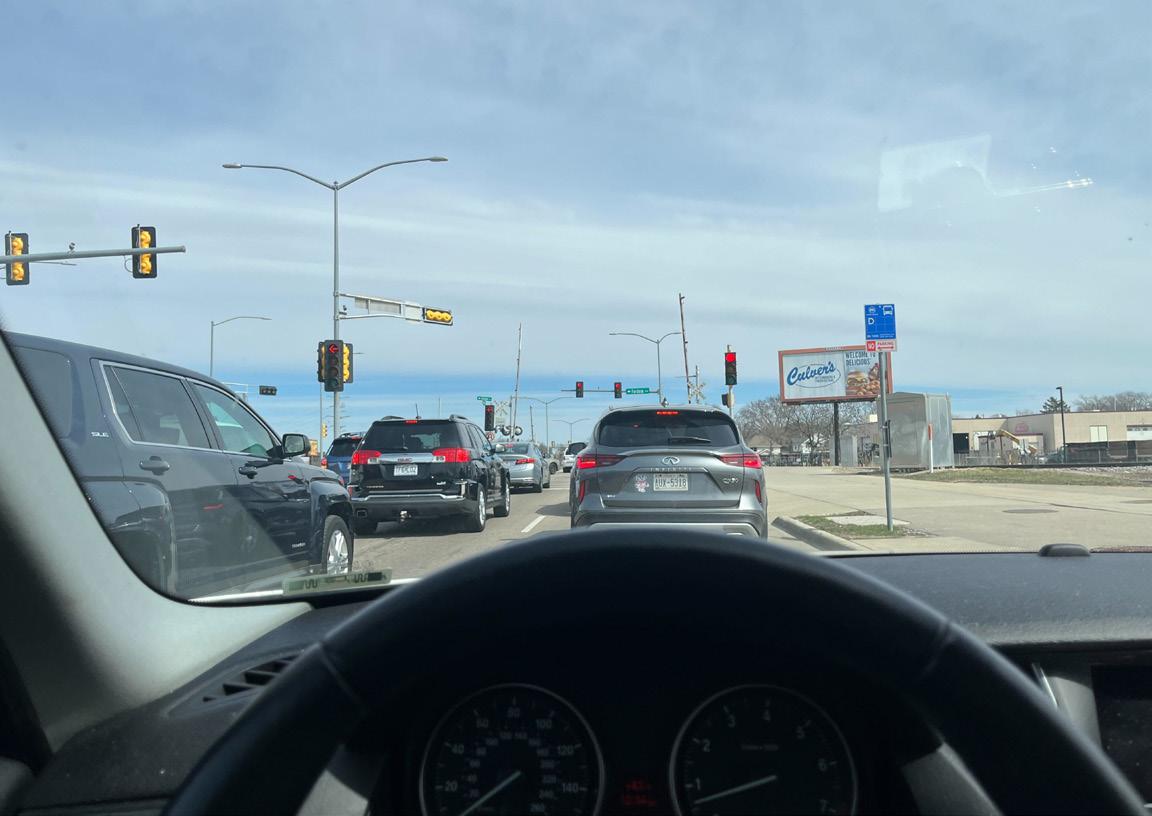
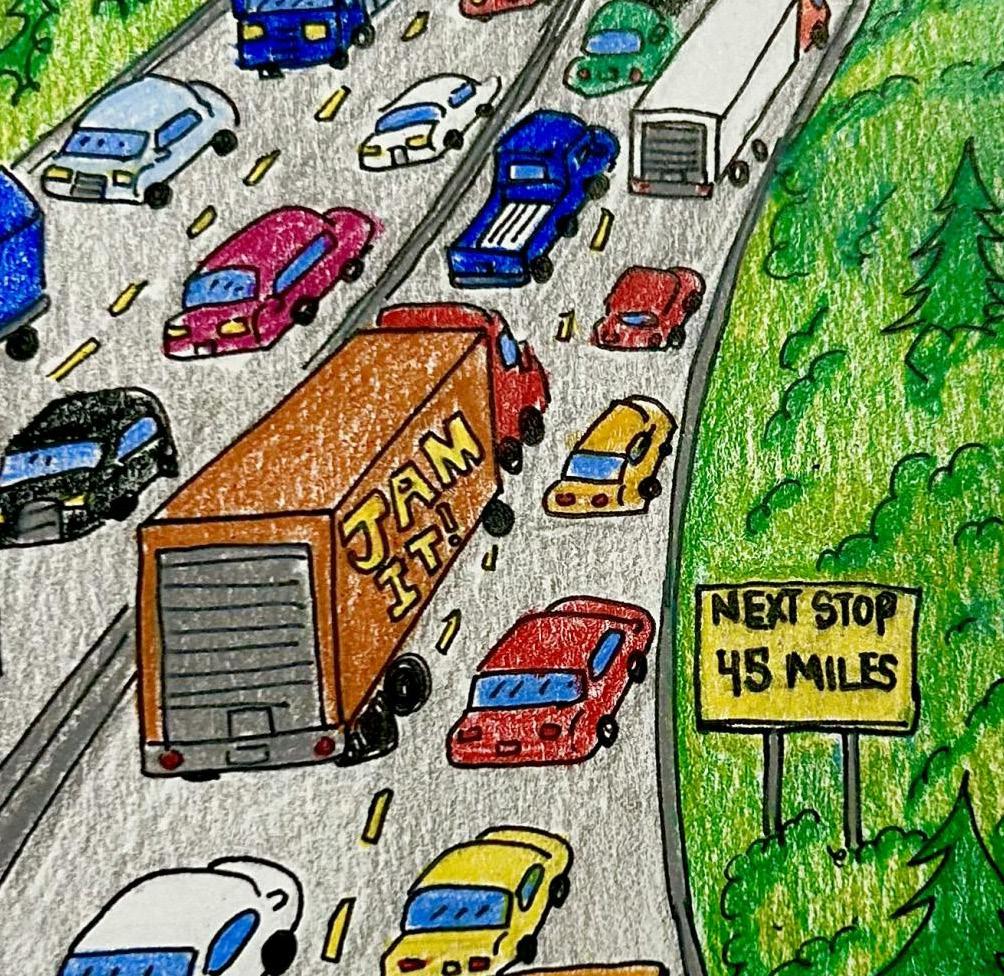
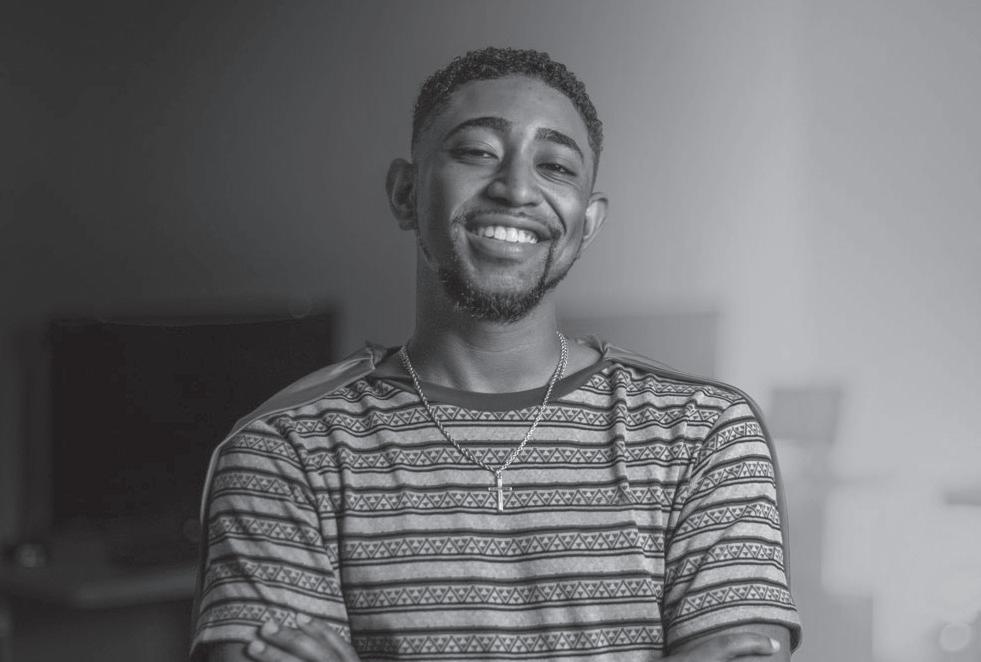
The smell of tostadas drifts under your nose as you watch the people around you smile. You’re eating with friends, family and people you’ve never met before. It’s nice to share a meal, easy to connect over trying something new.
This is made possible by Slow Food UW, a student-run nonprofit organization dedicated to providing good, clean and fair food for the Madison community.
“It’s a space where you can sit next to someone you’ve never sat next to, and you know sitting next to someone sharing a meal, you kind of automatically start connecting with them,” said Celeste Kim, Slow Food co-director.
At either dinner on Mondays or lunch on Wednesdays, community members can pay $6-8 for locally sourced, healthy and inclusive meals served in a dining hall style to encourage new connections.
The entire staff — cooks, cashiers, interns and everyone in between — works unpaid to provide food to their community.
“It’s useful,” said student volunteer Matteo Kozlowski. “You’re just bringing smiles, and it makes you happy that you can share a good meal with everyone as well.”
“It’s heartwarming that they are constantly doing this for their community,” Slow Food co-director Graham Stigler said. “It’s nice to be a part of that.”
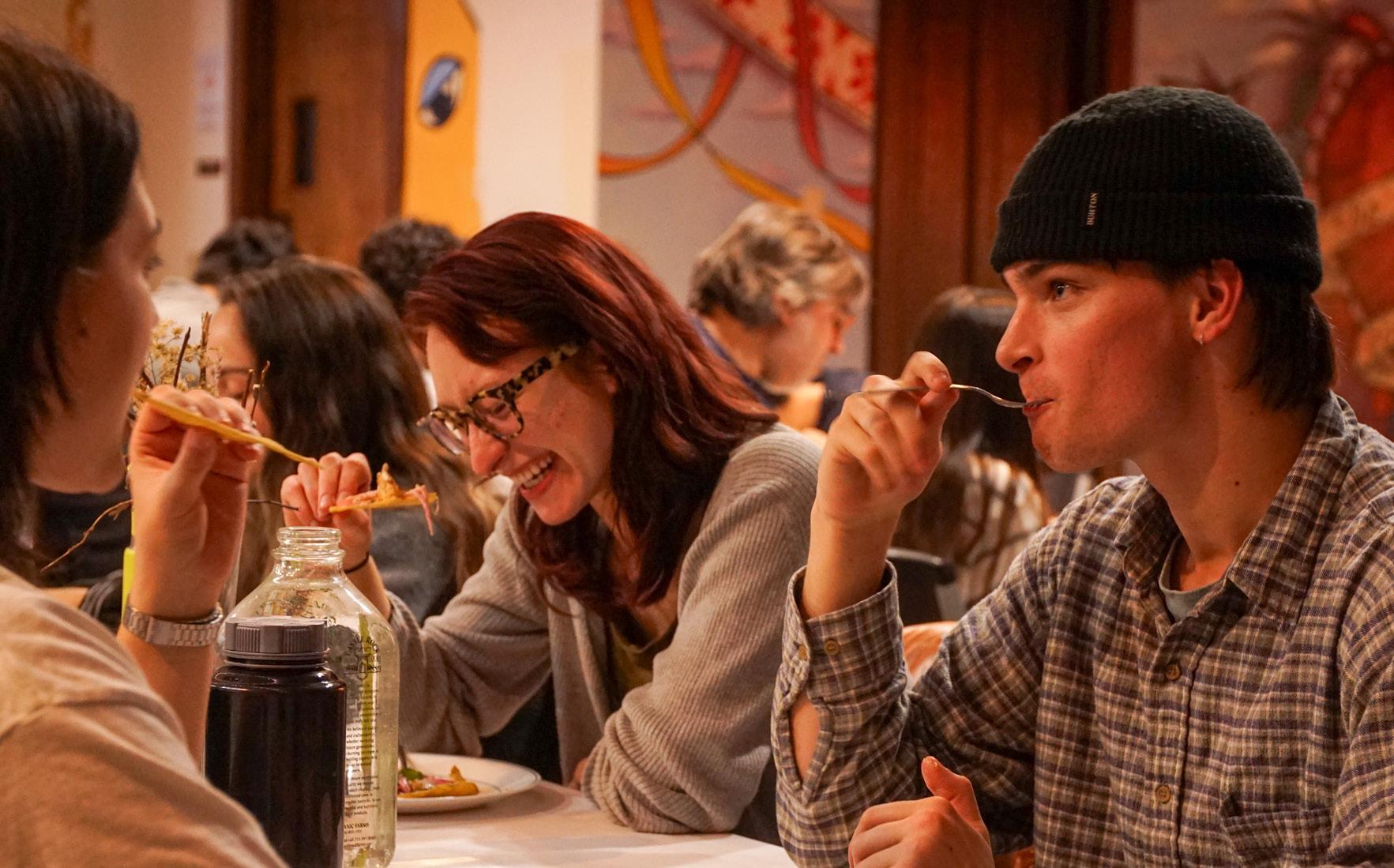
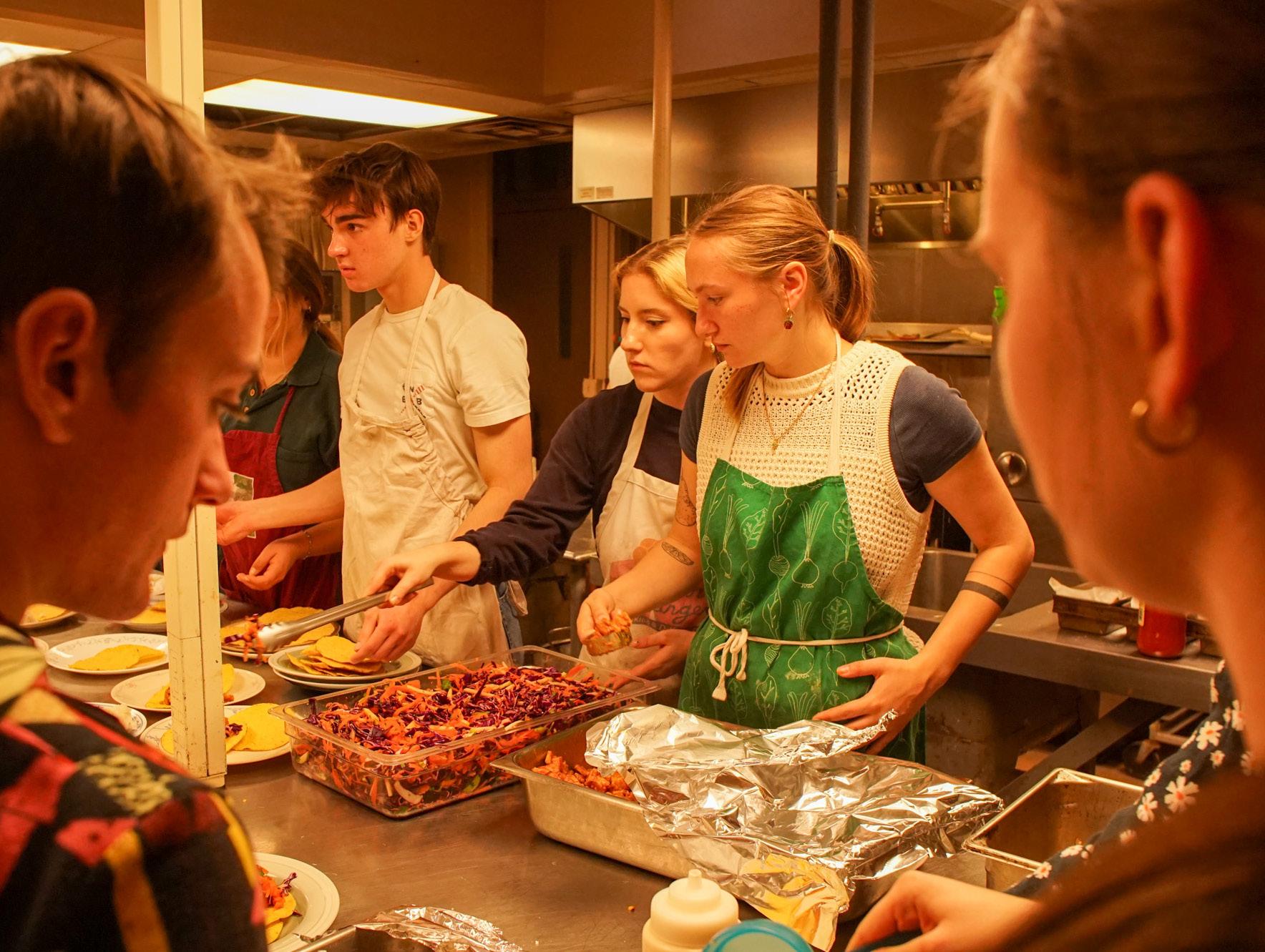

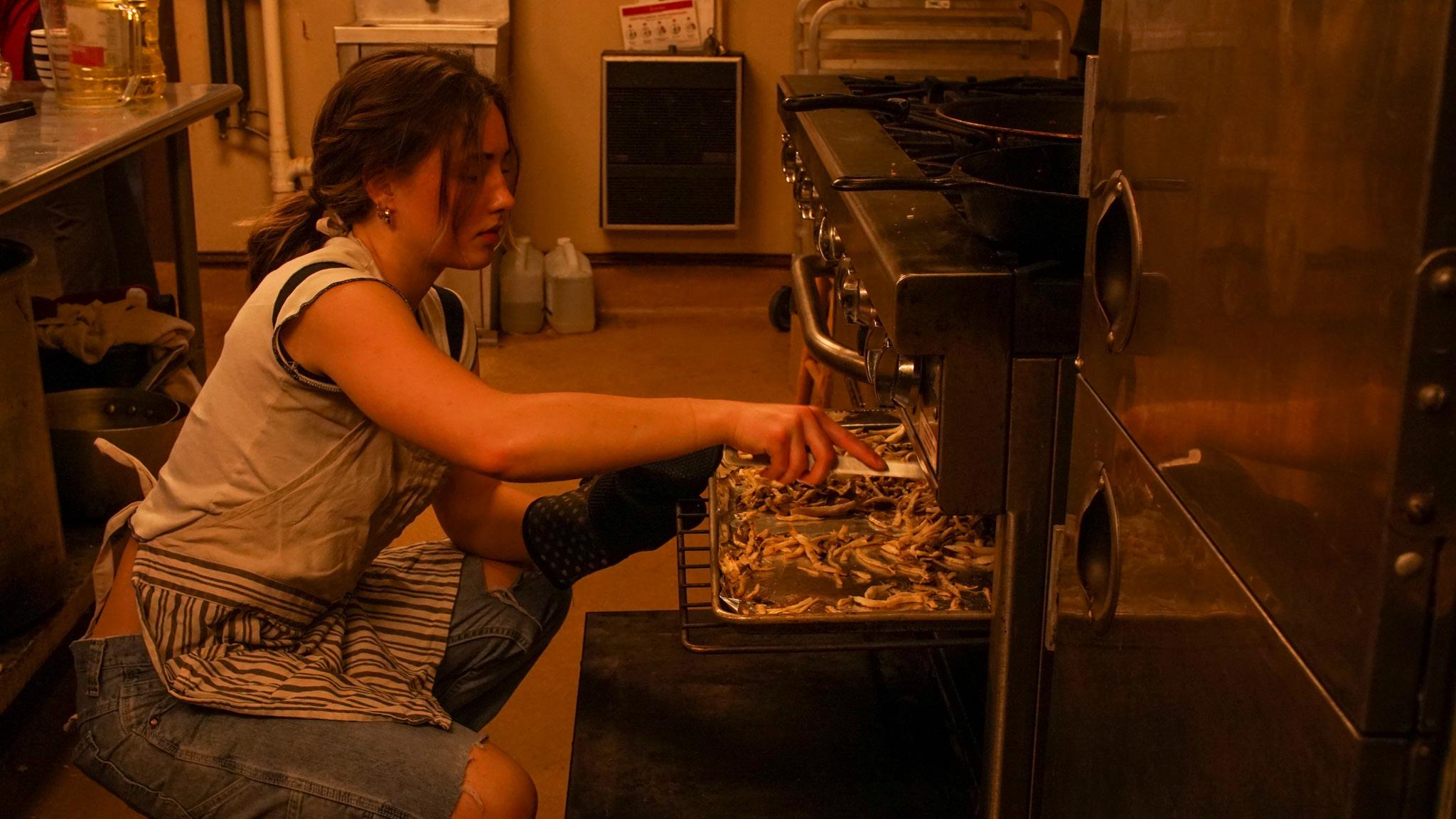
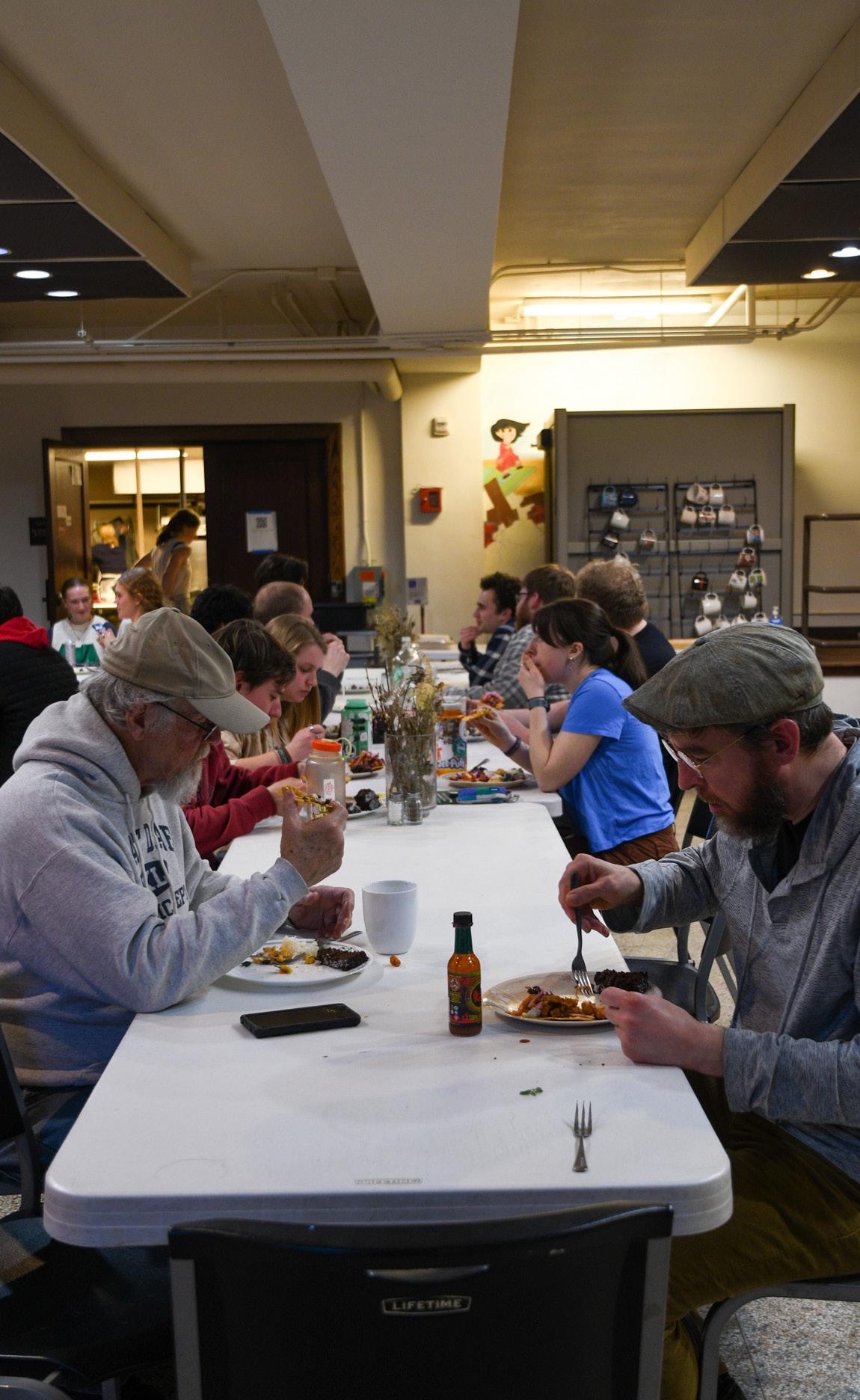
Many factors contribute to food insecurity including socioeconomic status, racial disparities and underfunding of certain ethnic communities, Kim added.
“The biggest thing we’re fighting against is that we don’t want to have that divide between everyone here,” Kim added. “We want to be able to provide for everyone we can.”
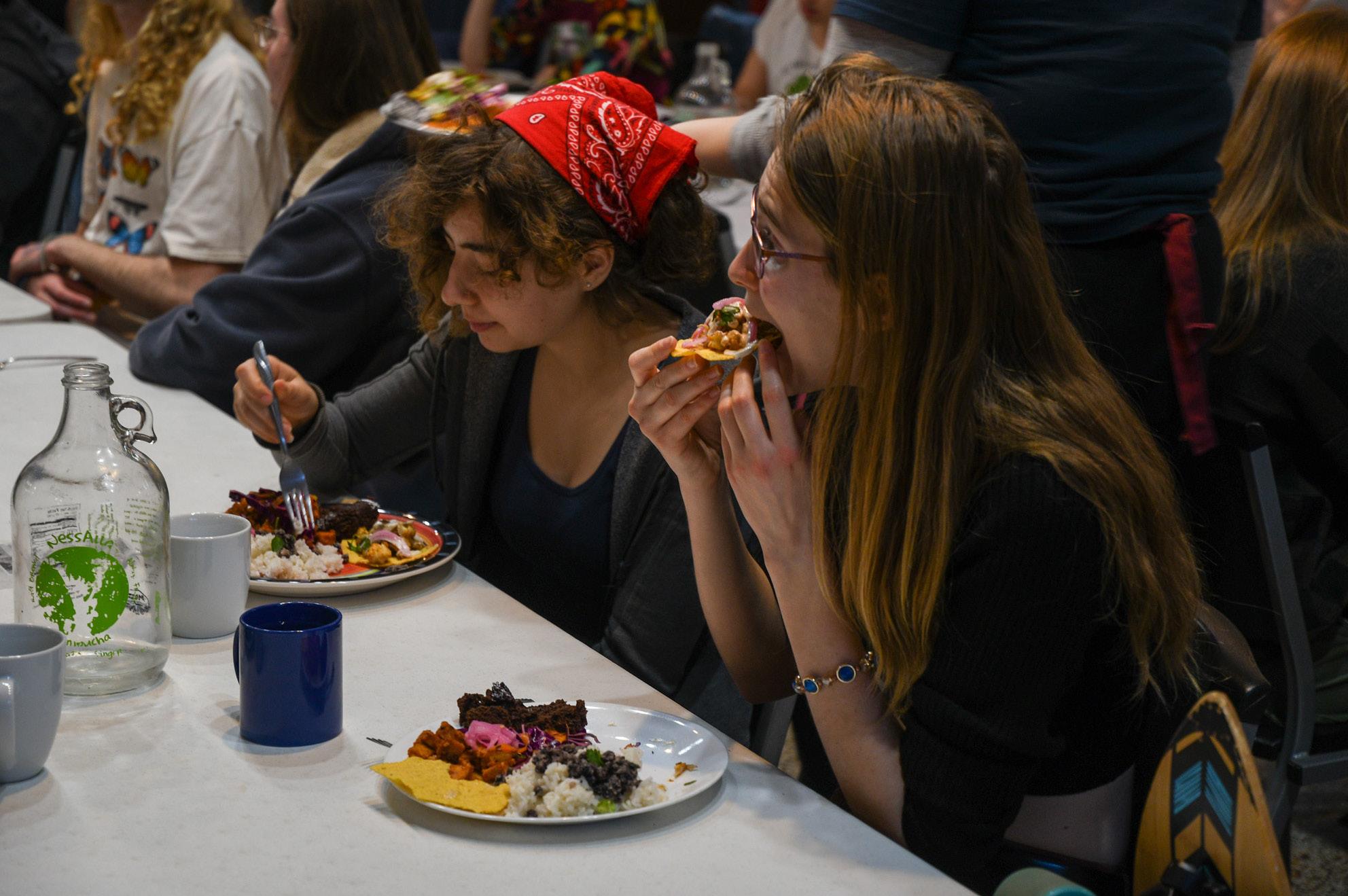
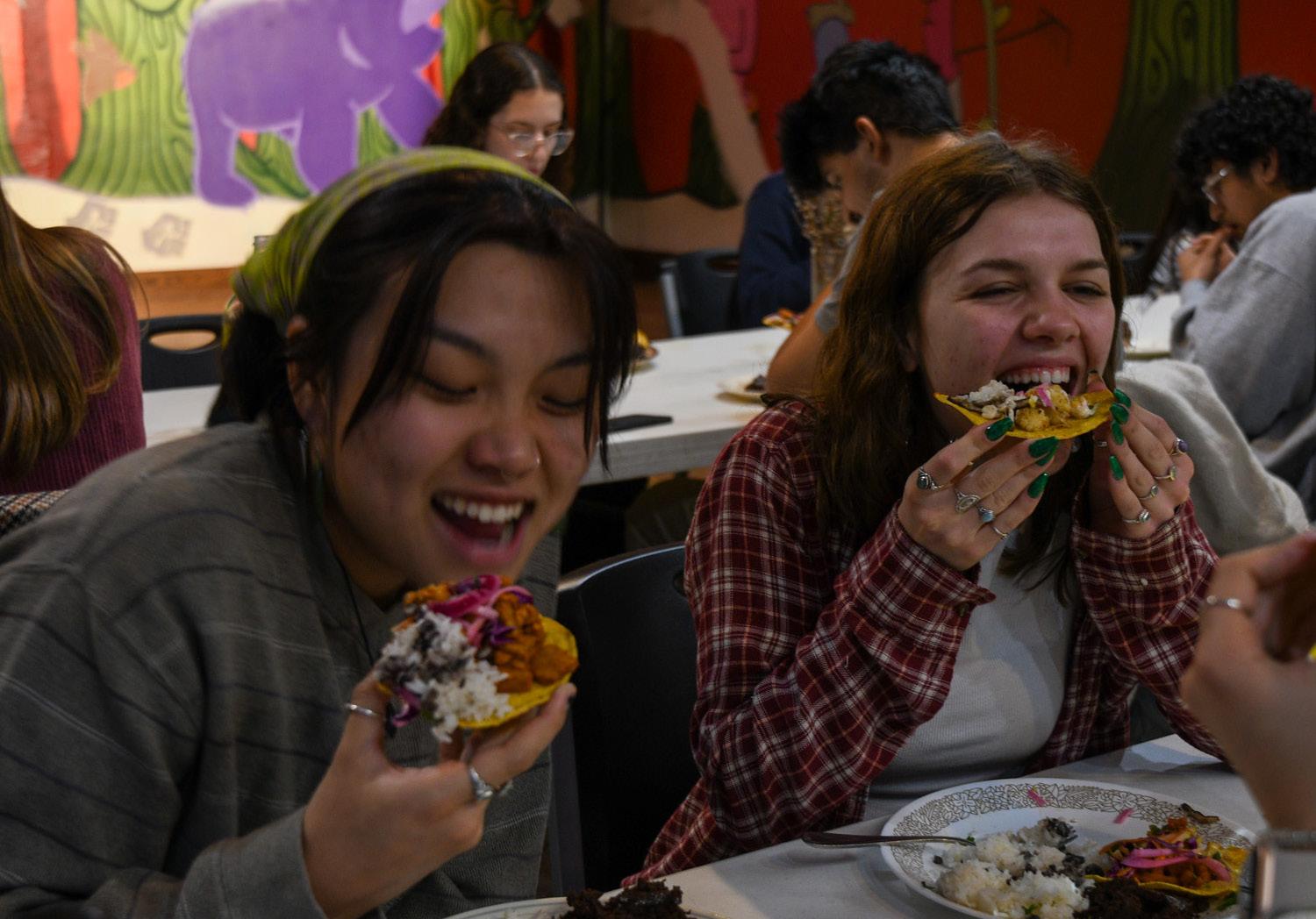
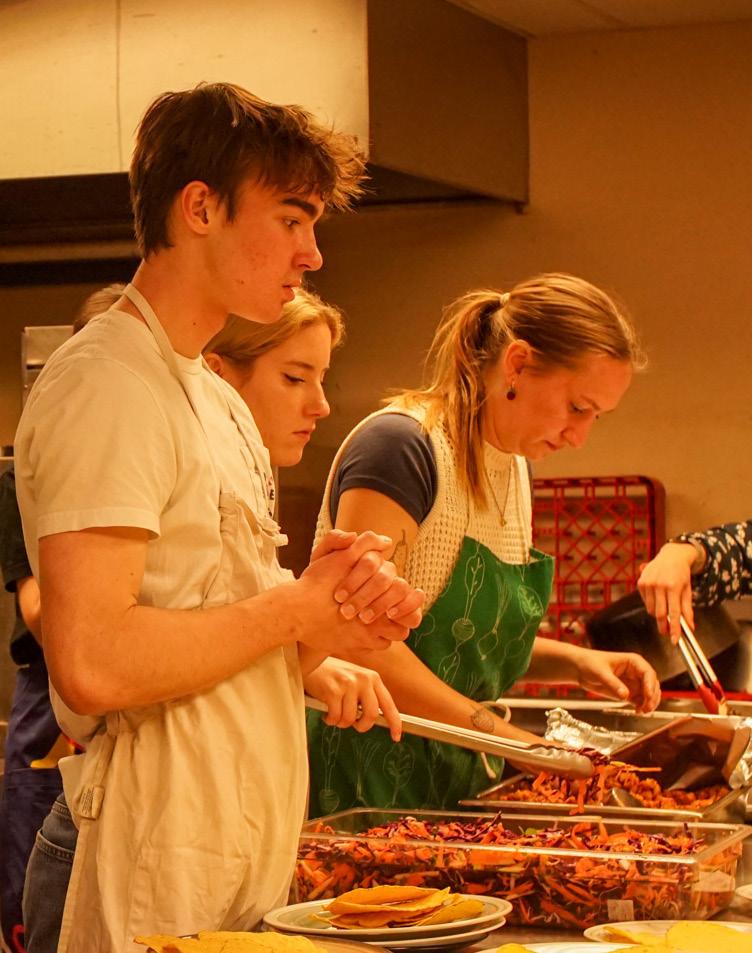

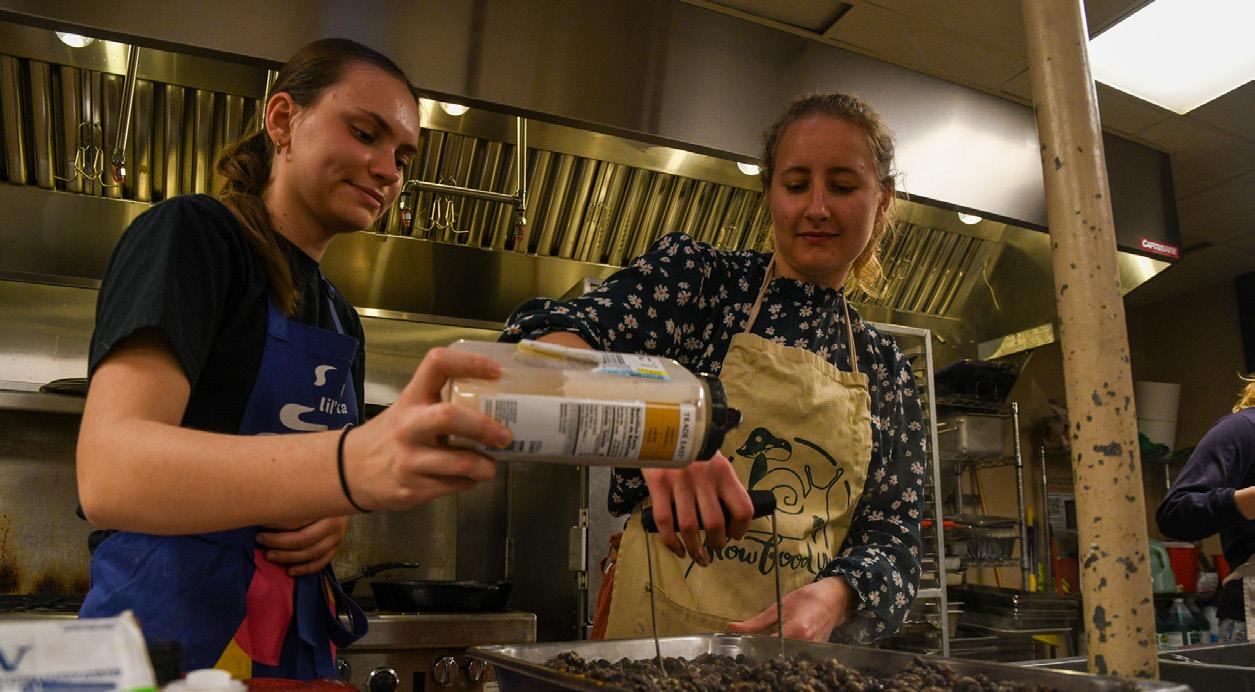
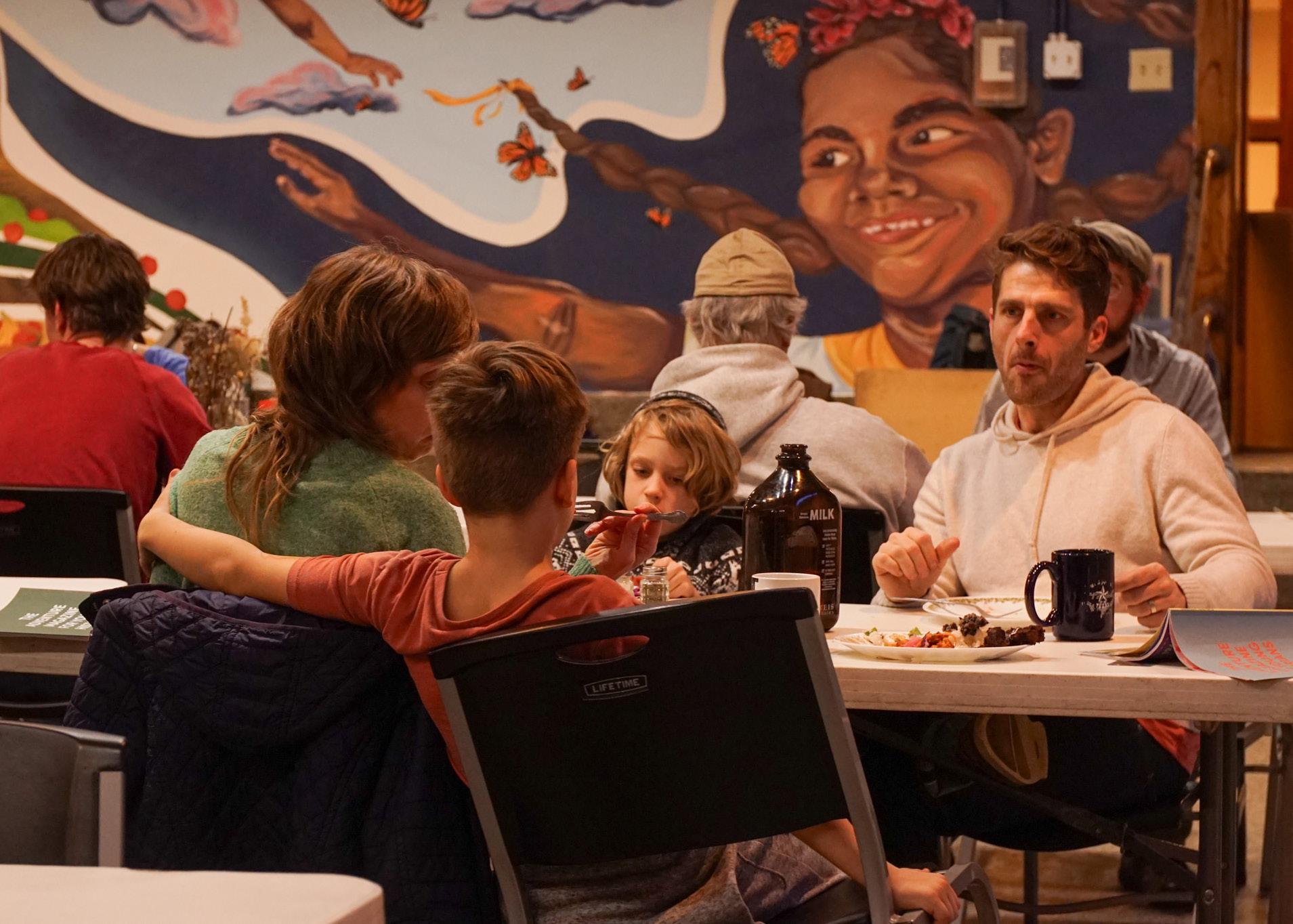
You’re just bringing smiles, and it makes you happy that you can share a good meal with everyone as well.
- Matteo Kozlowski, kitchen volunteer
This inclusivity creates a diverse community of attendees, from college-age students to parents and their children.
Kim also said Slow Food UW is a place for students to make friends outside their major, something helpful for those that tend to “stay in their own route.”
“It was really good food, and I enjoyed eating with my friends,” UW-Madison freshman Maddie Lawson said. “There’s a lot of friendly faces greeting you and just all around.”

